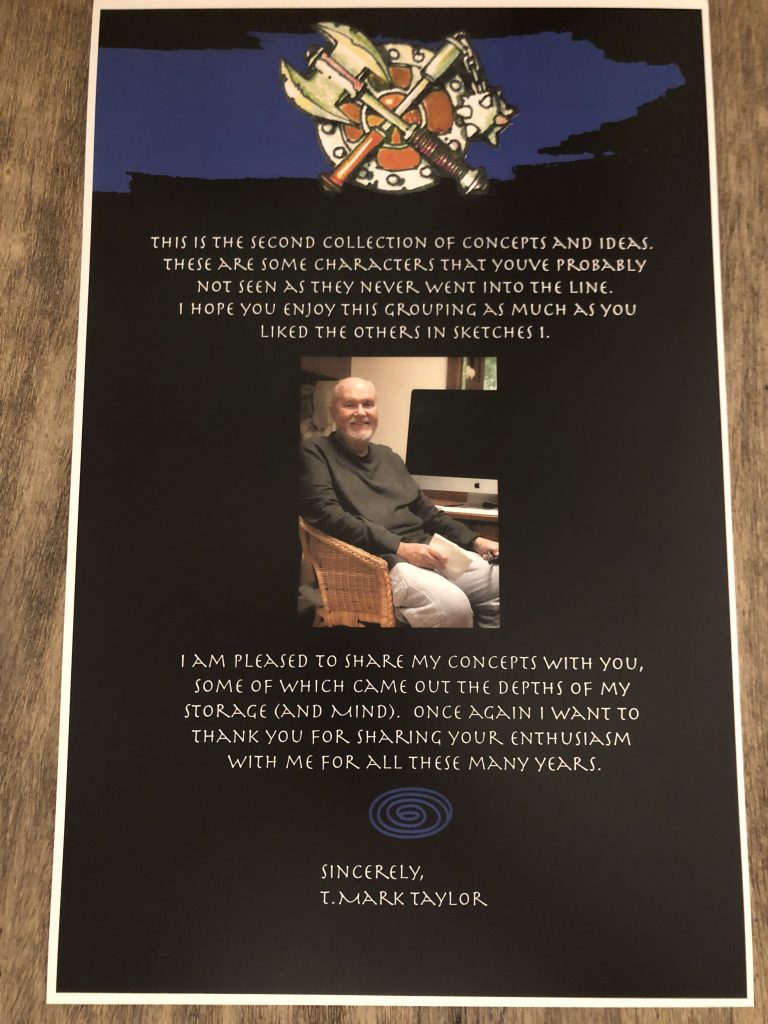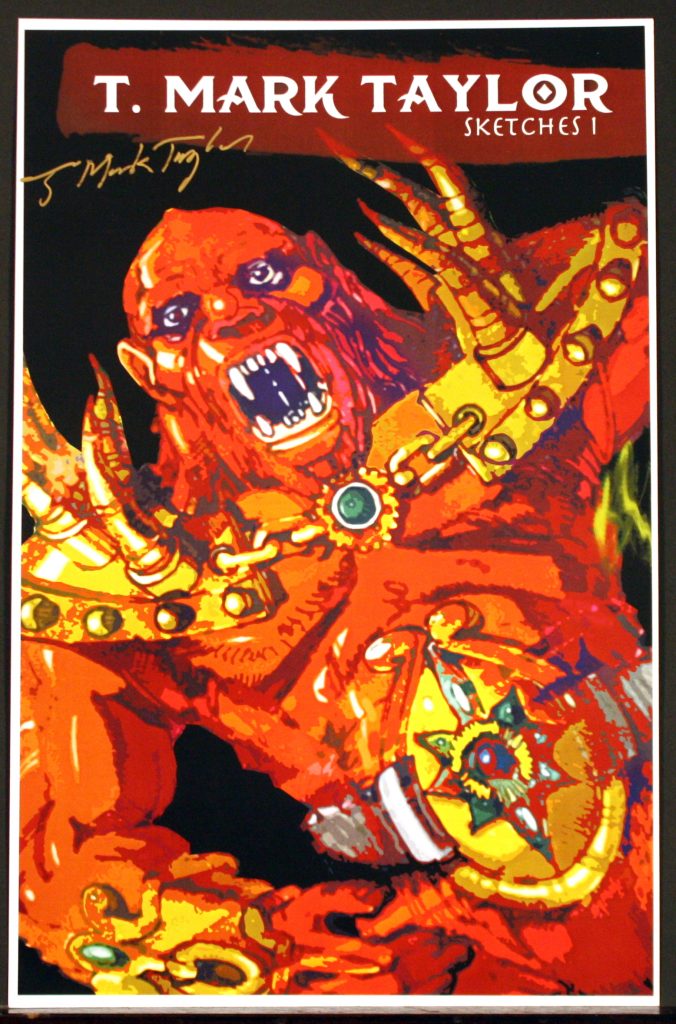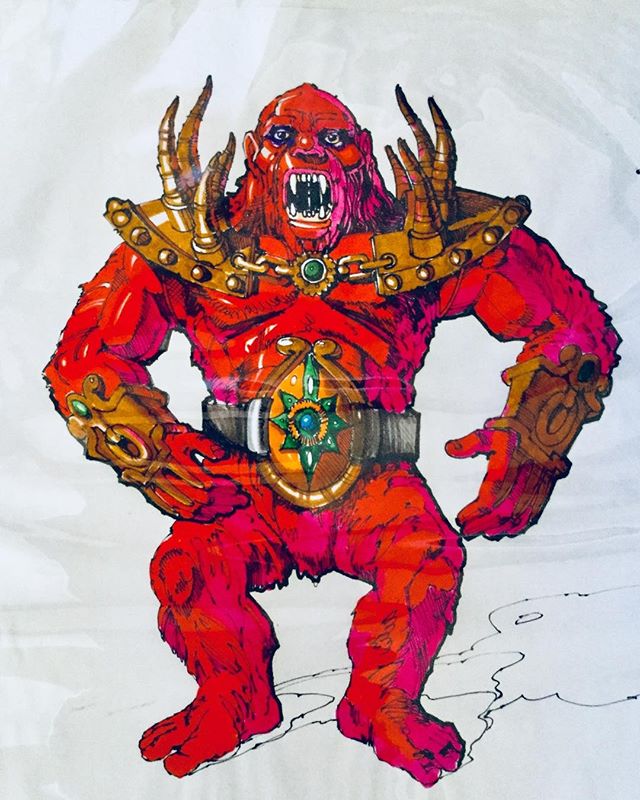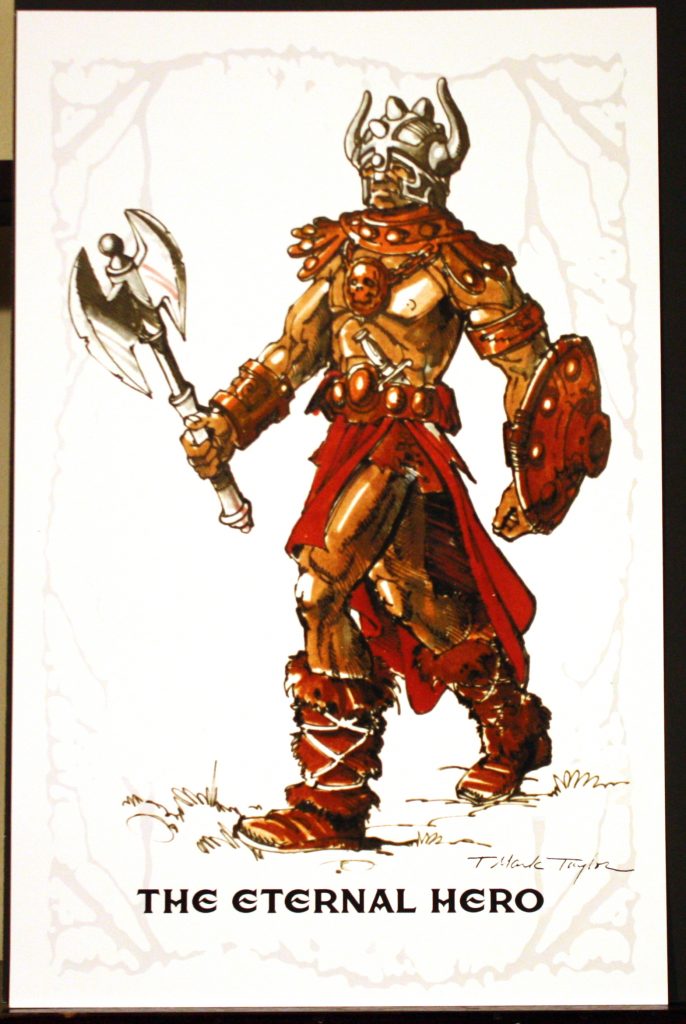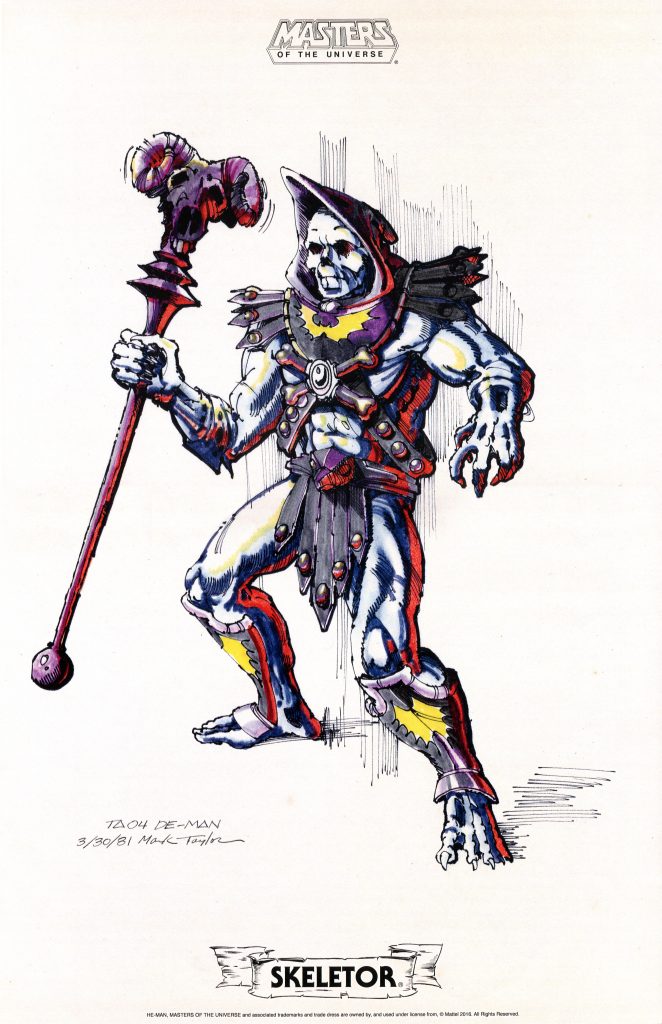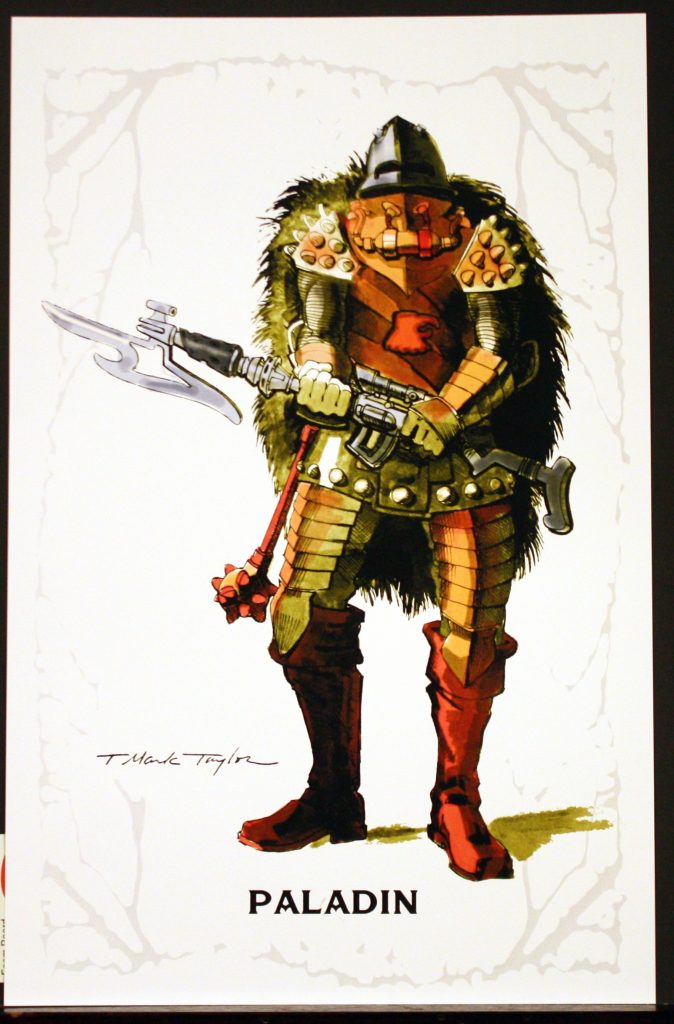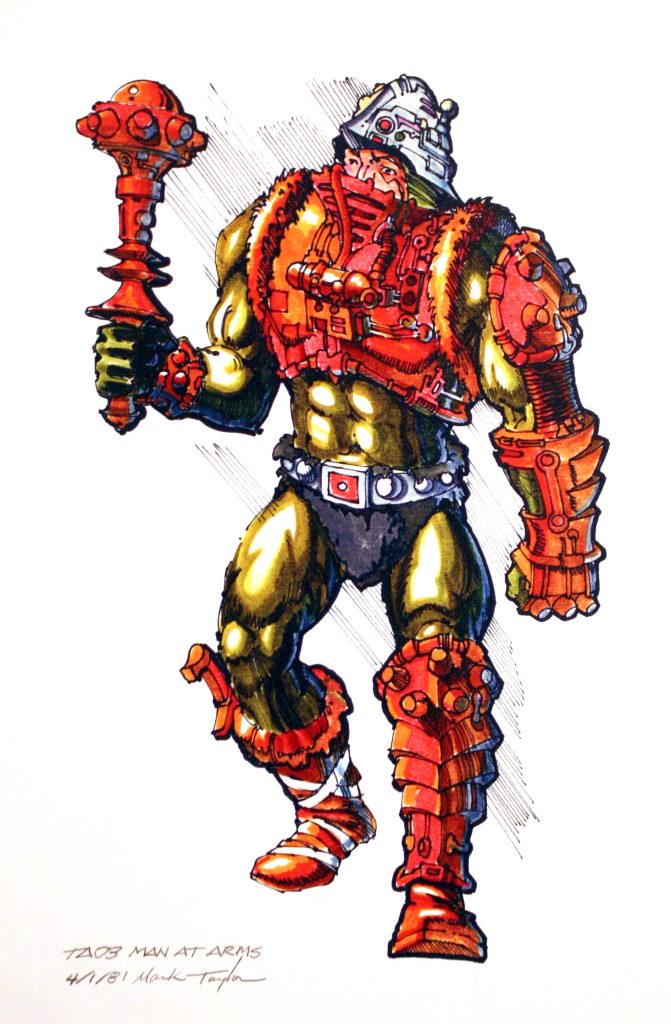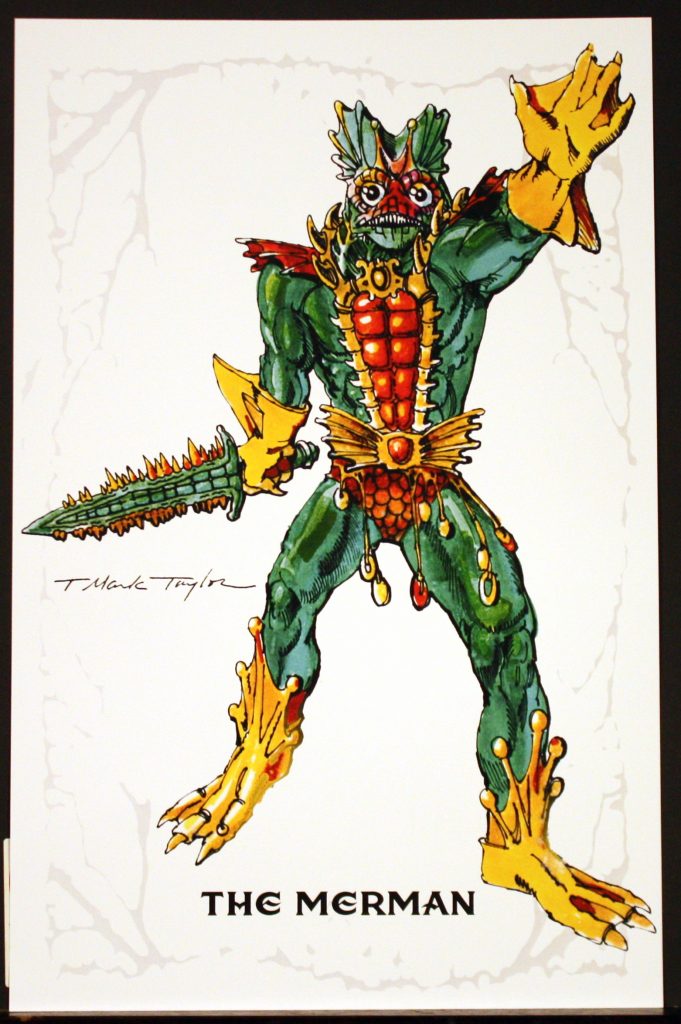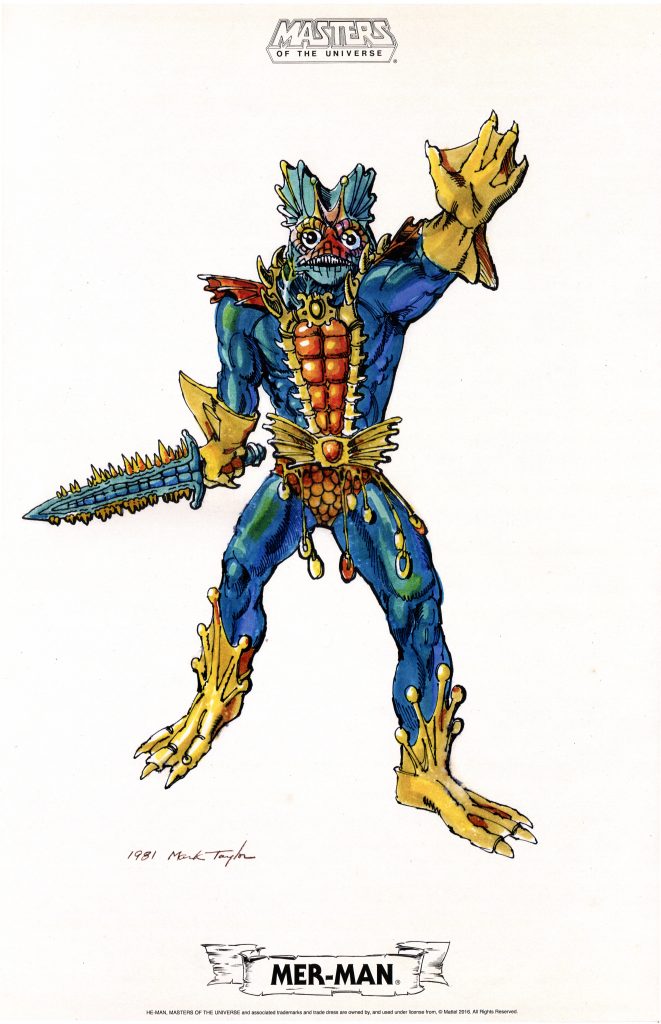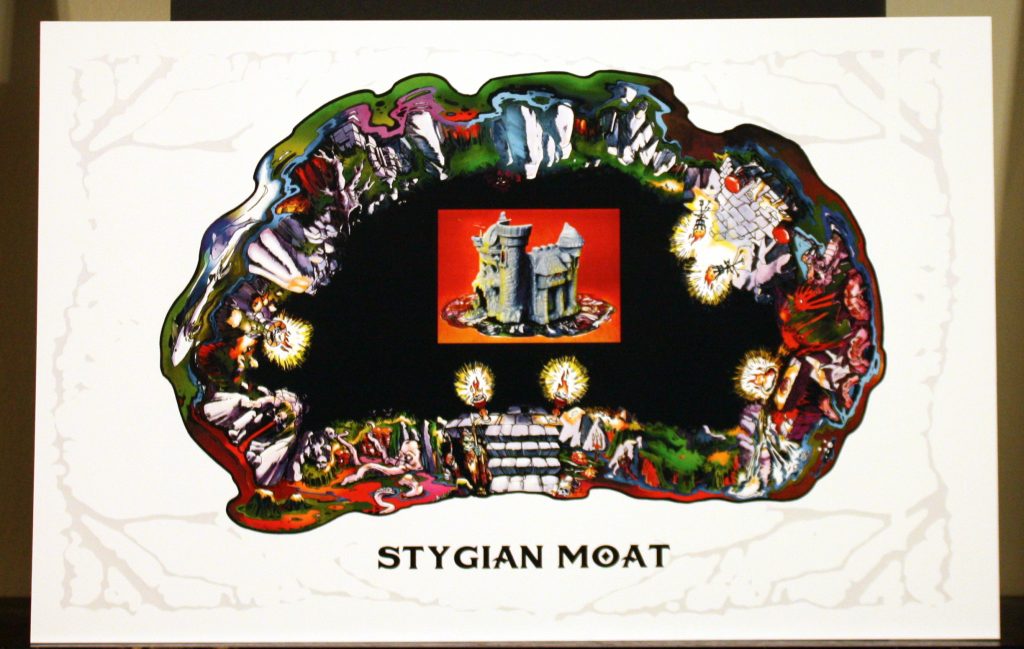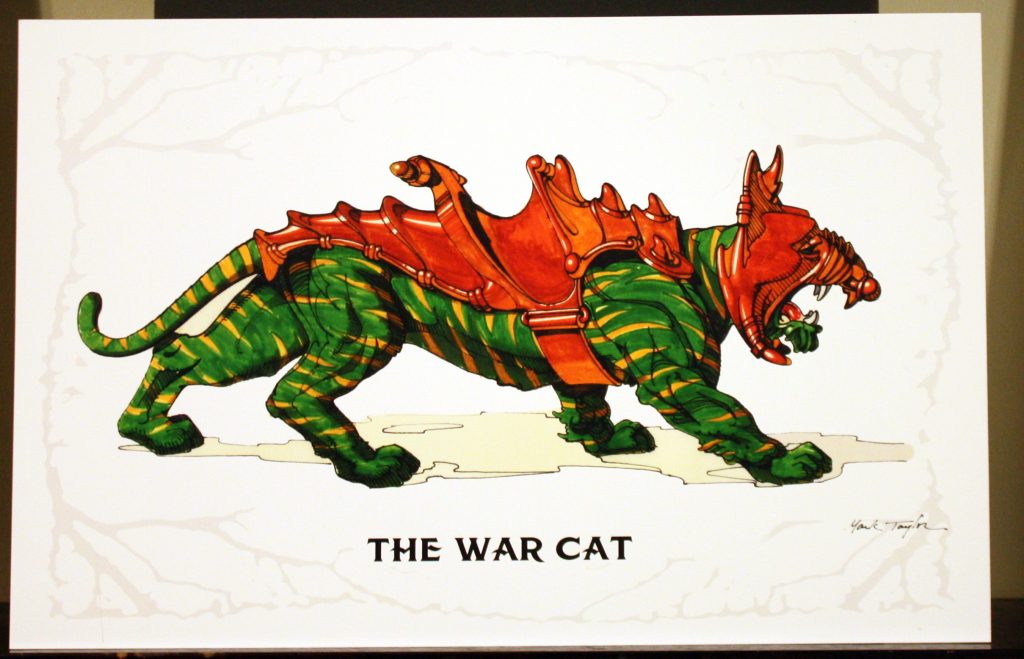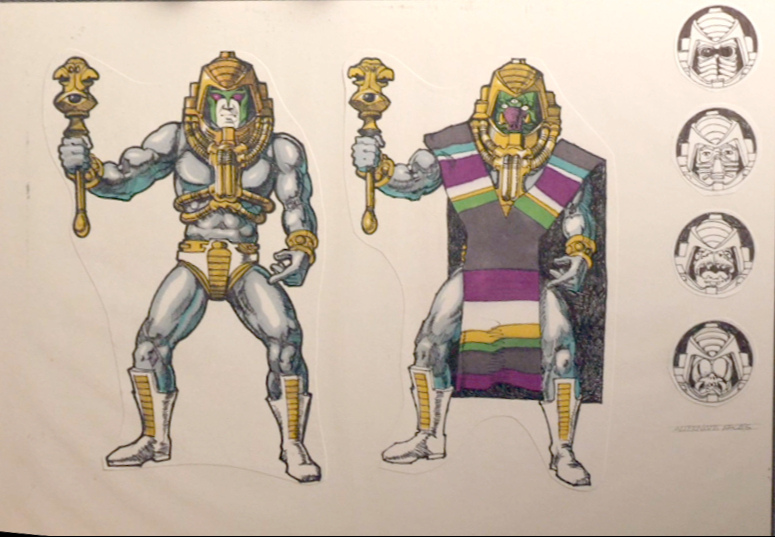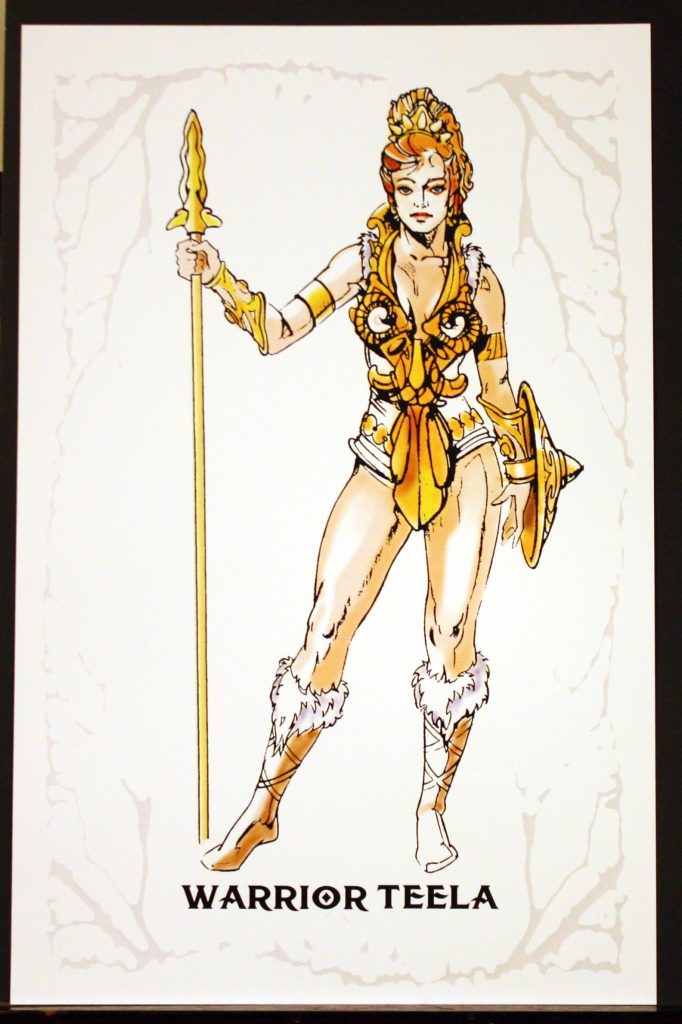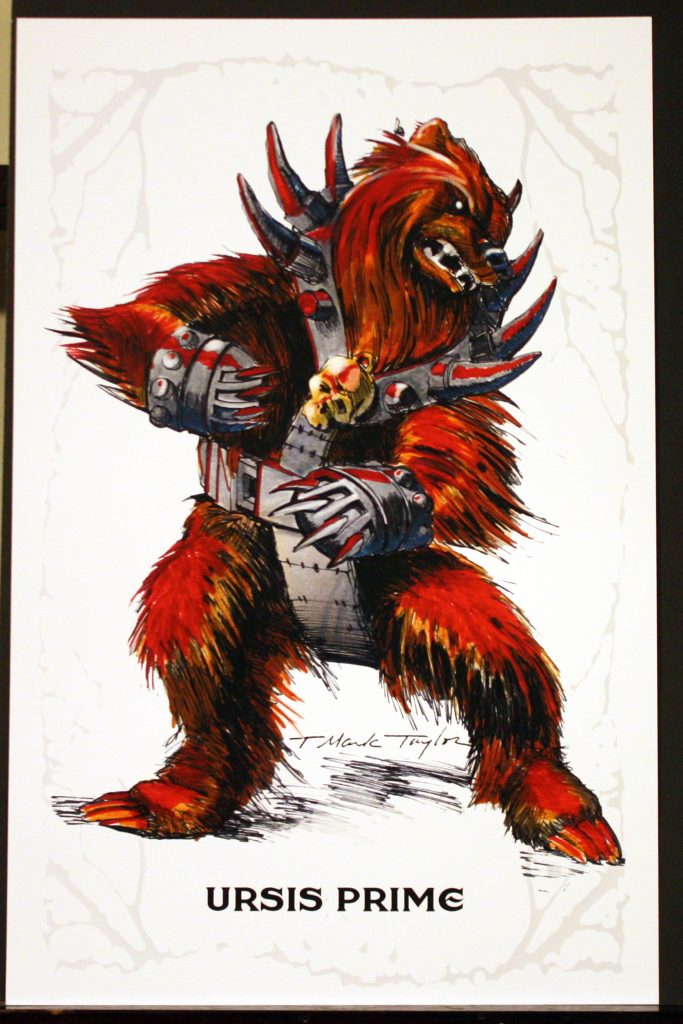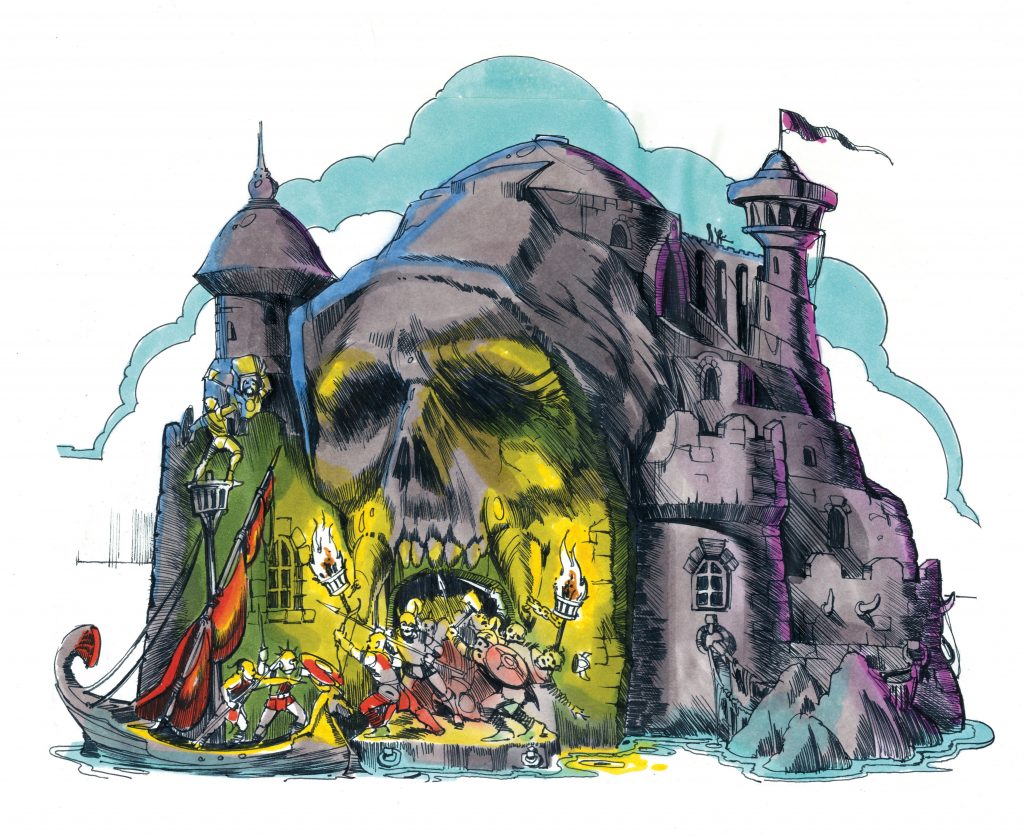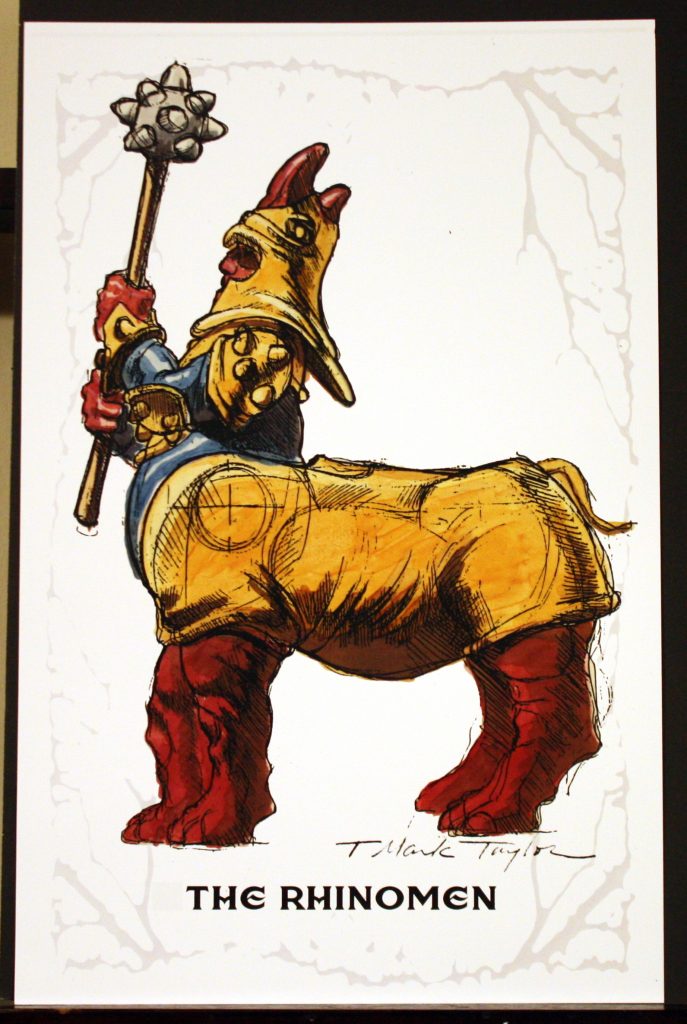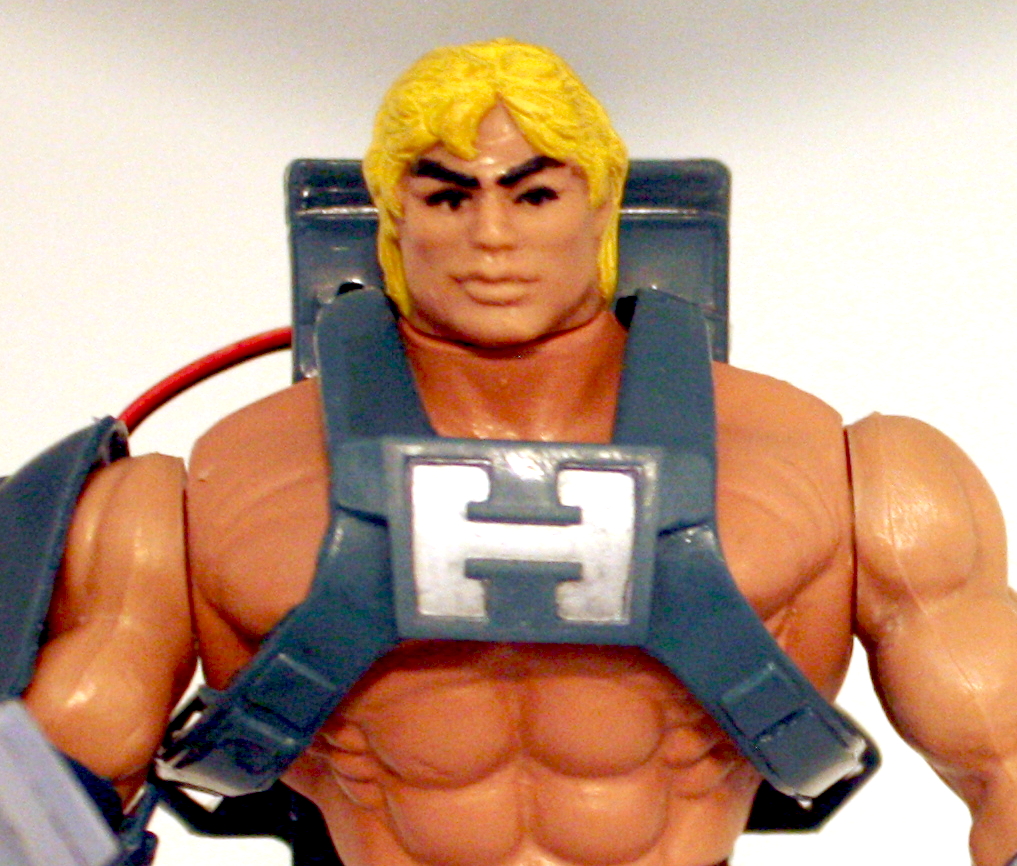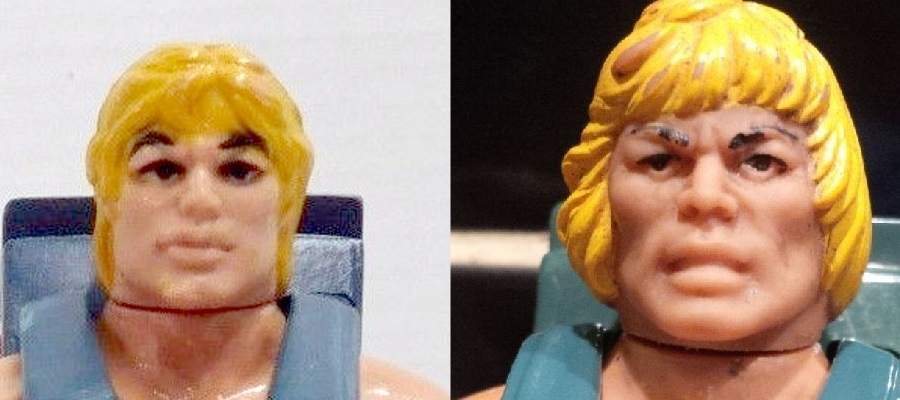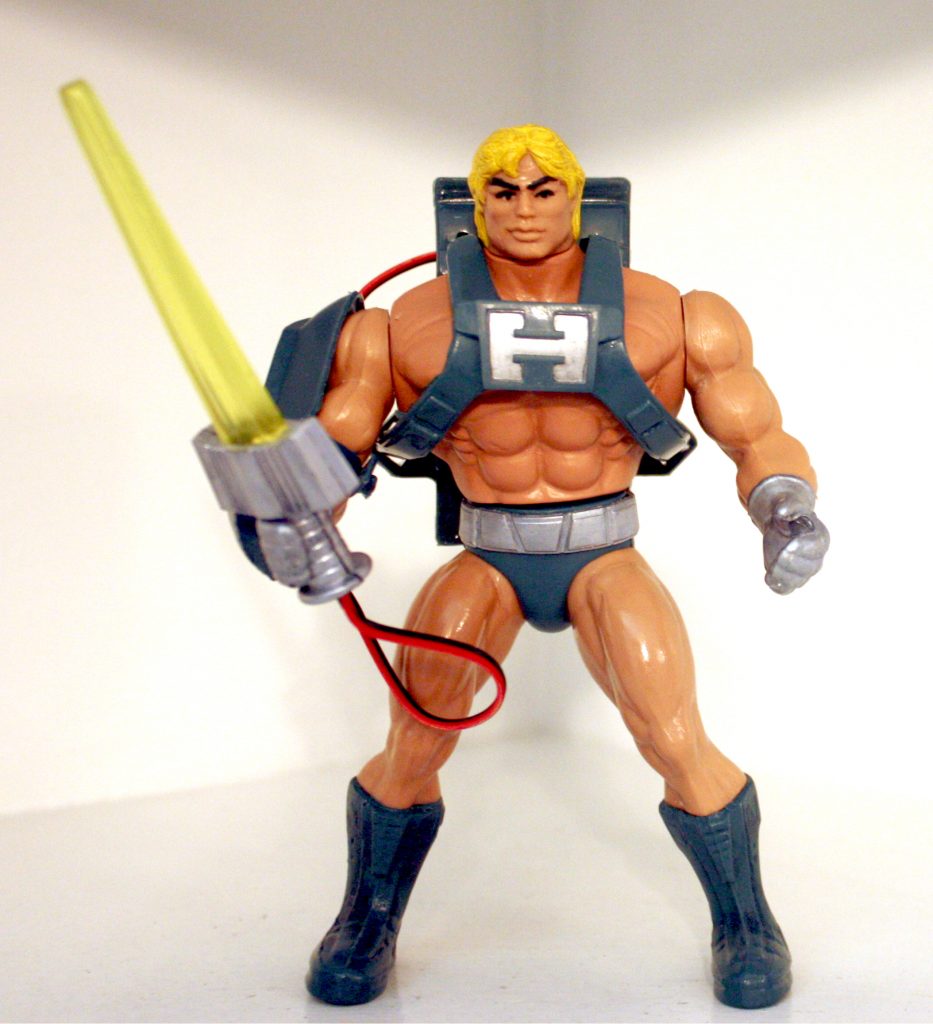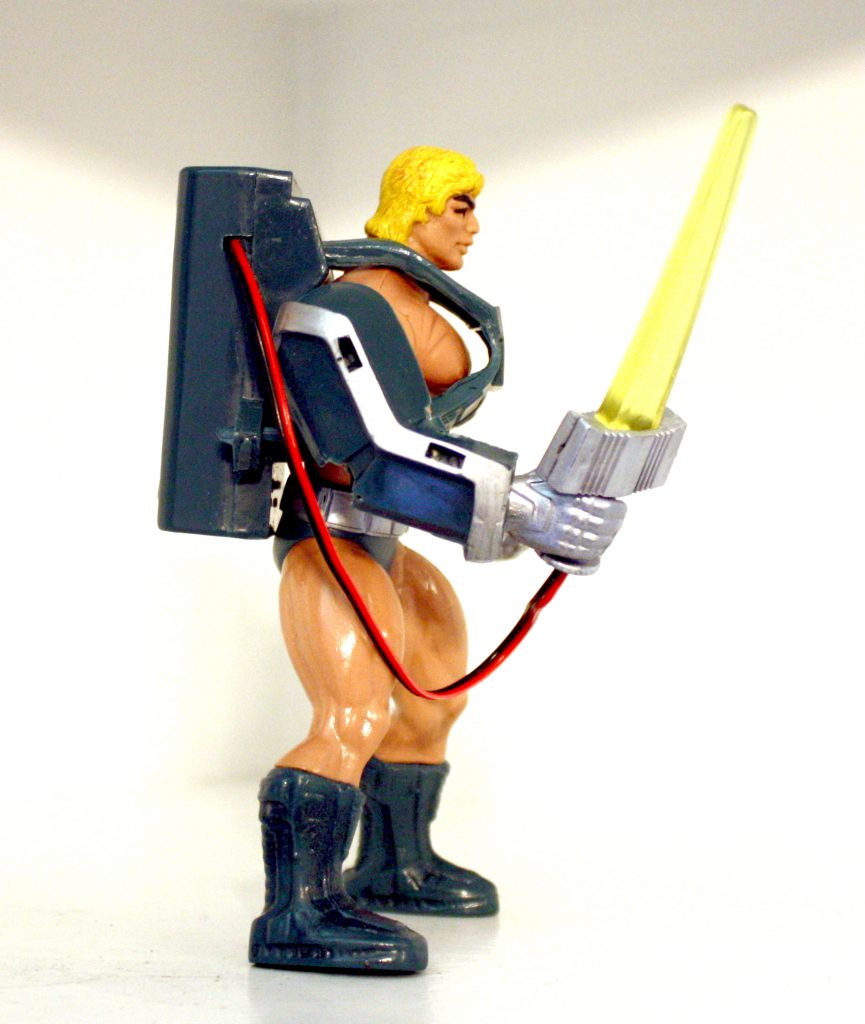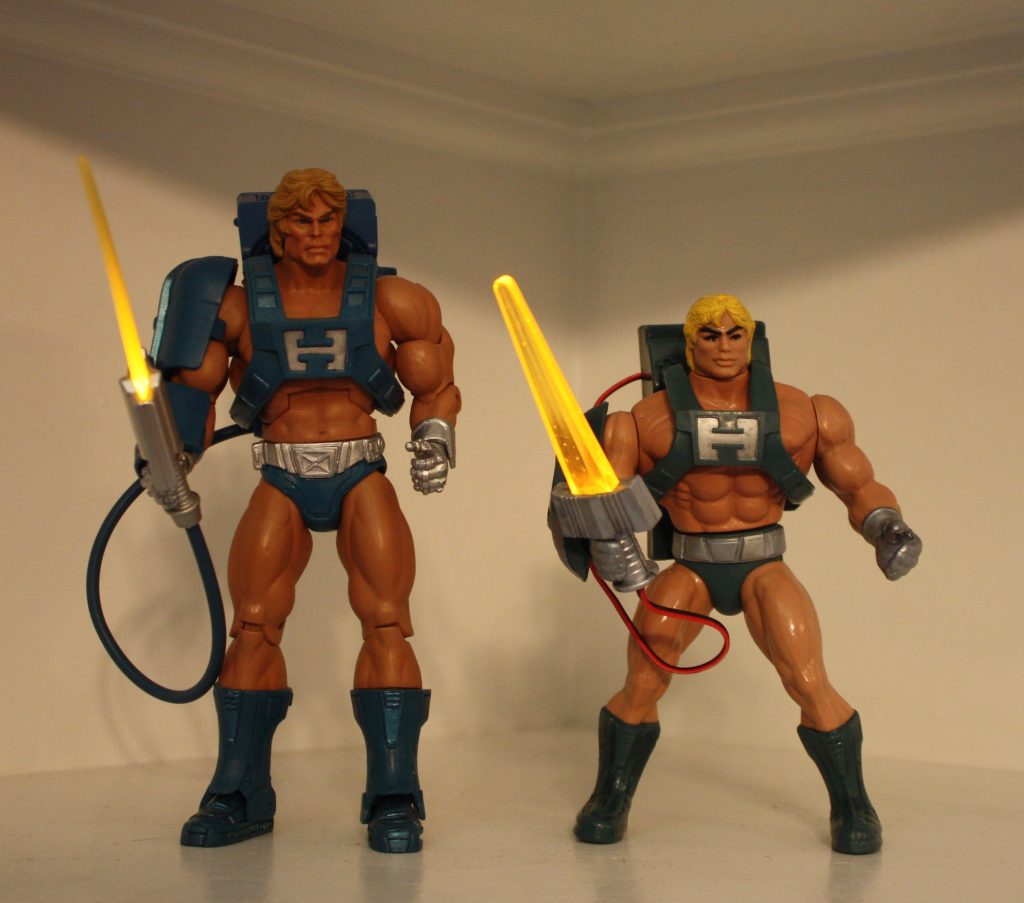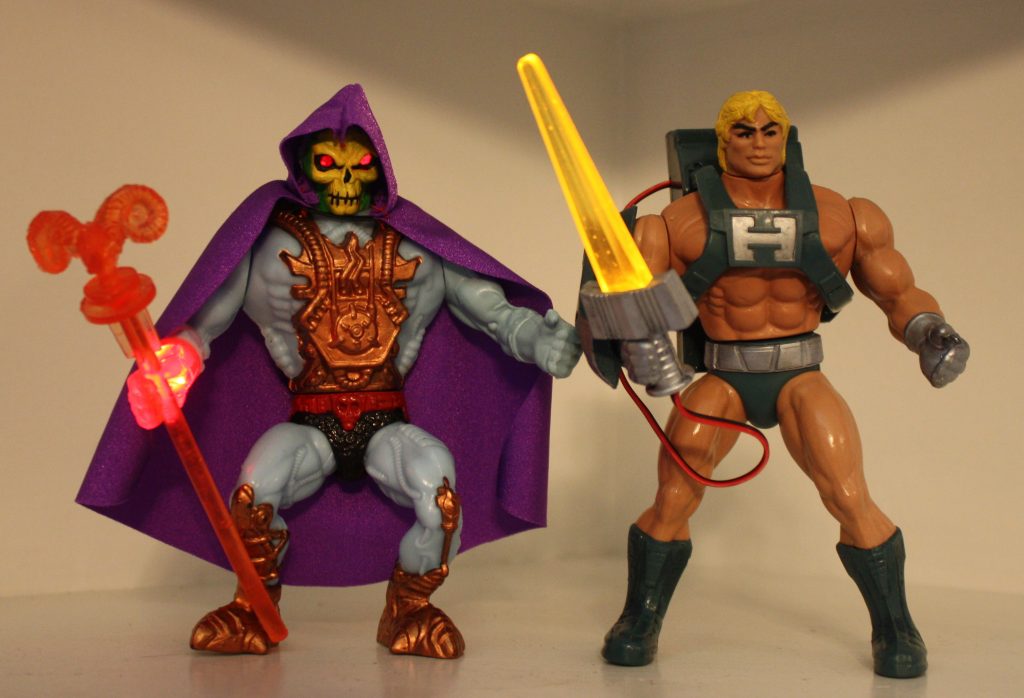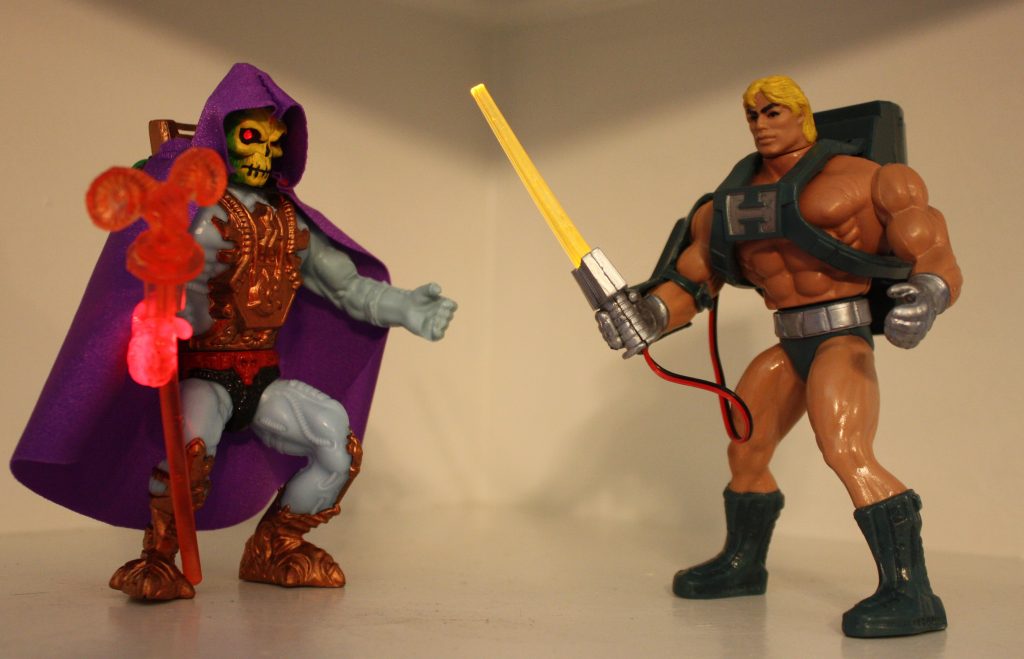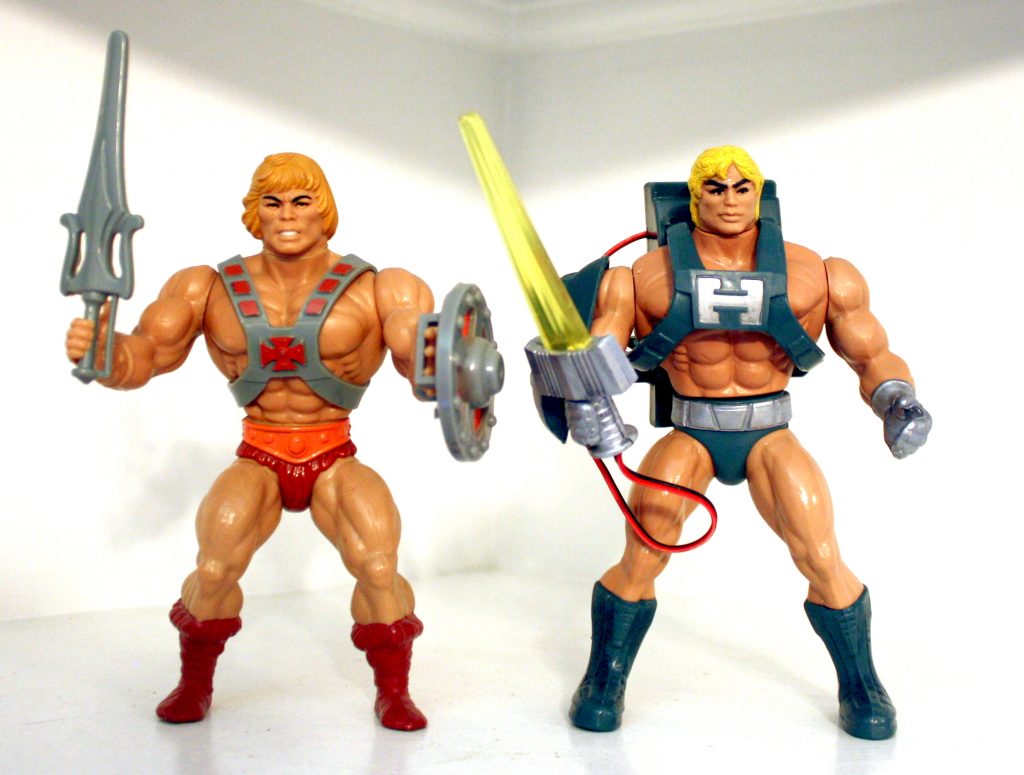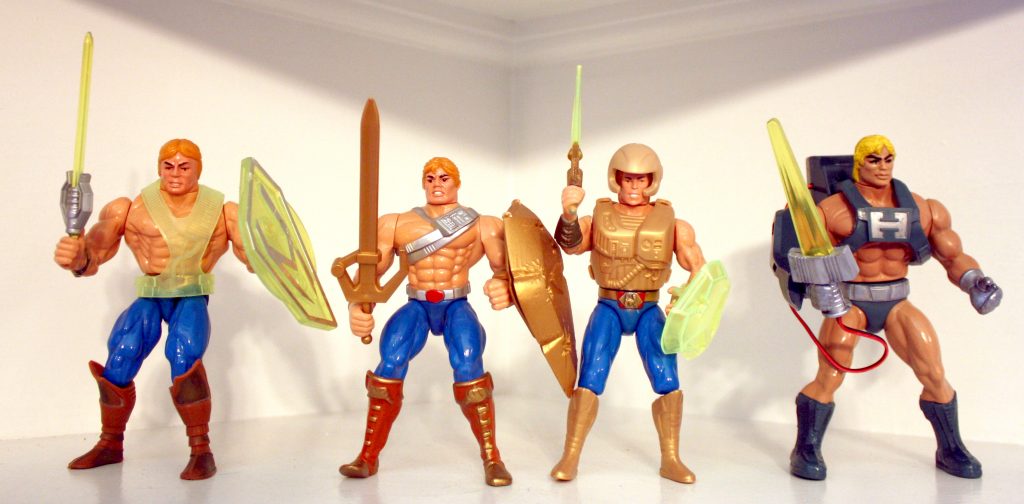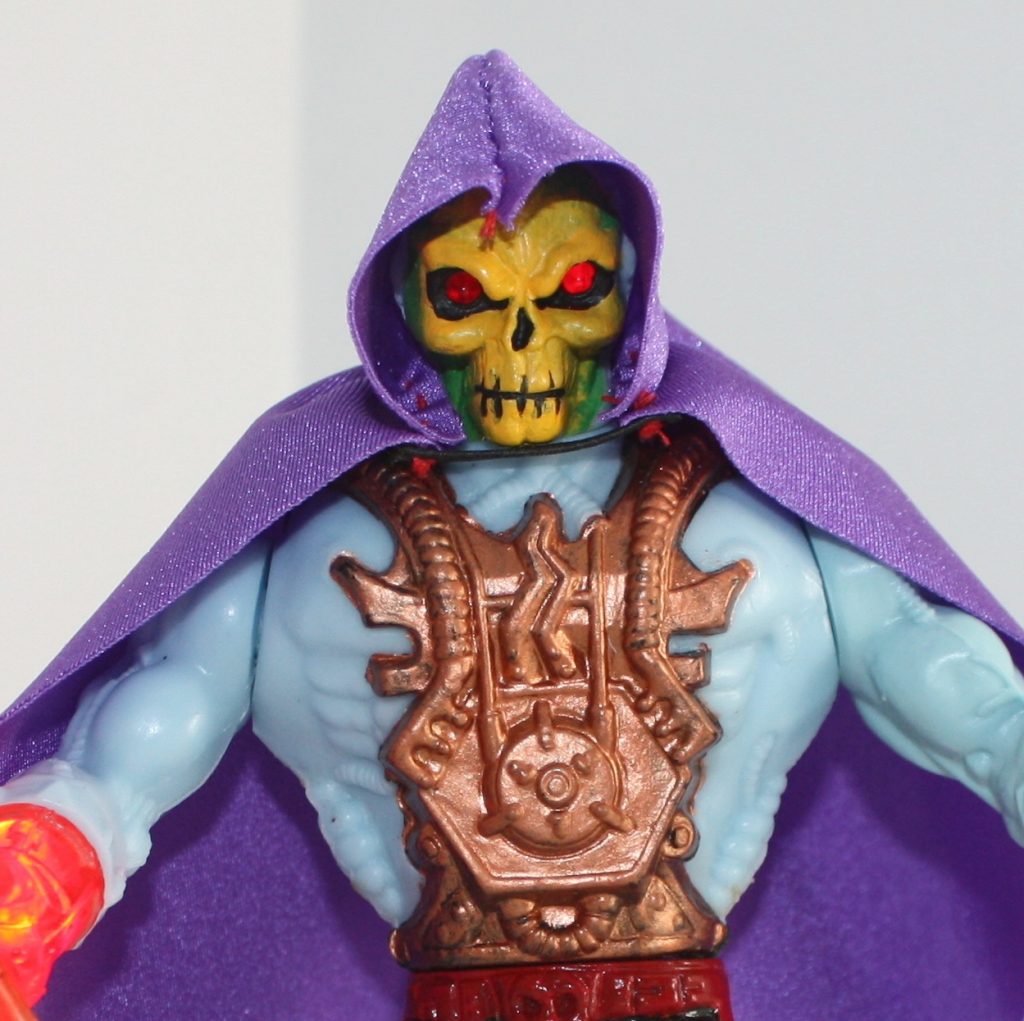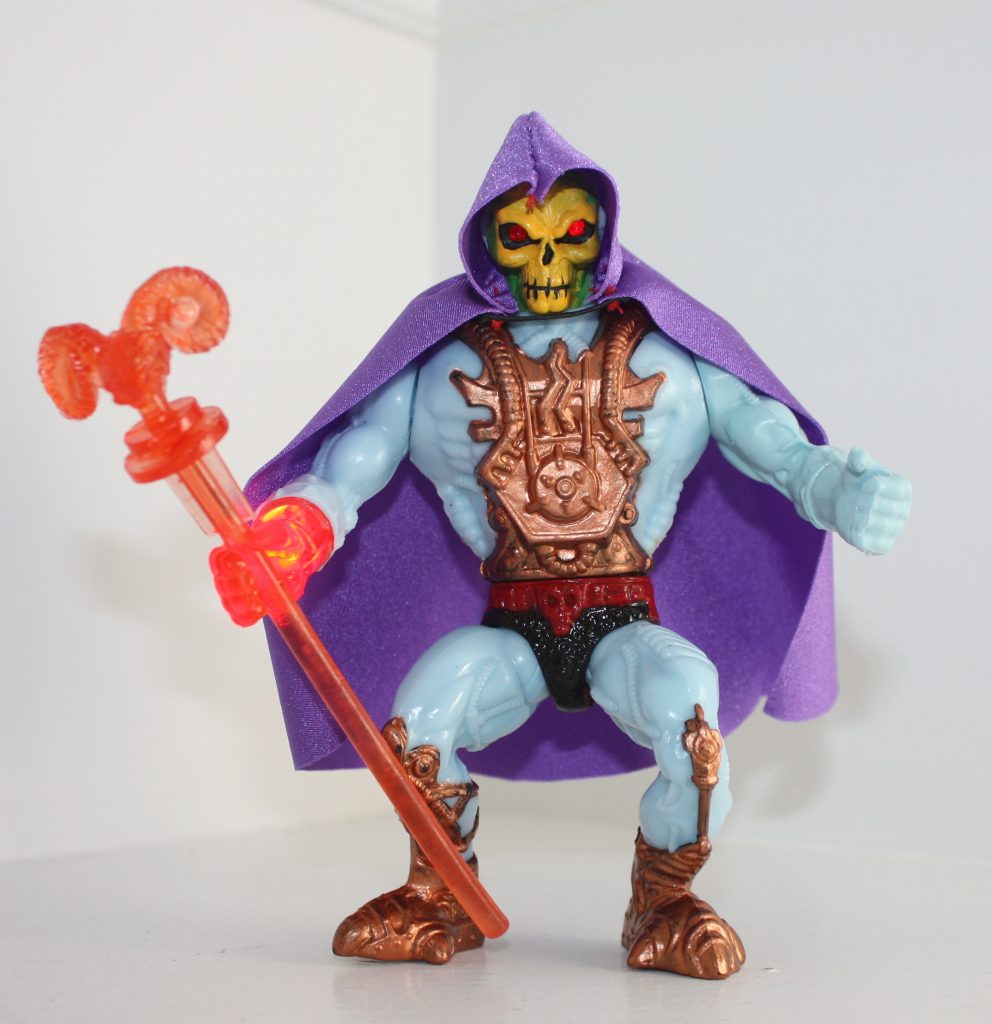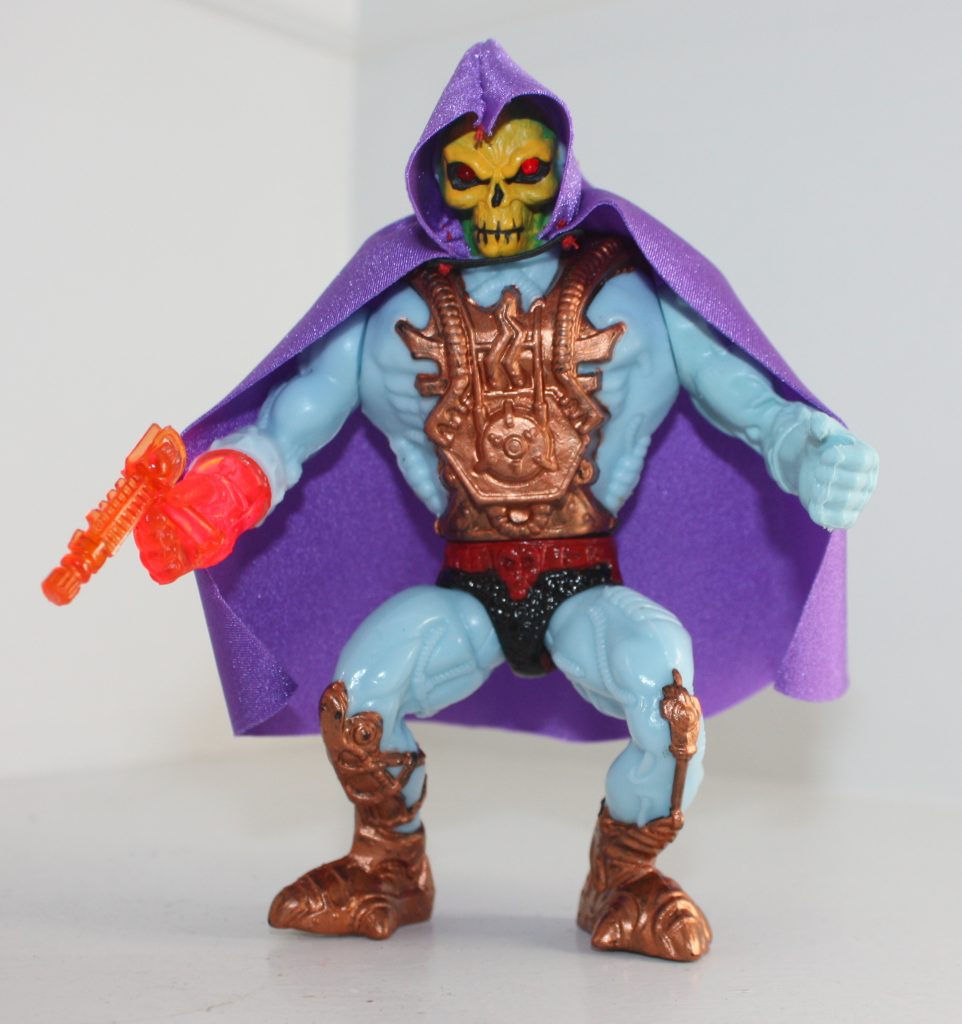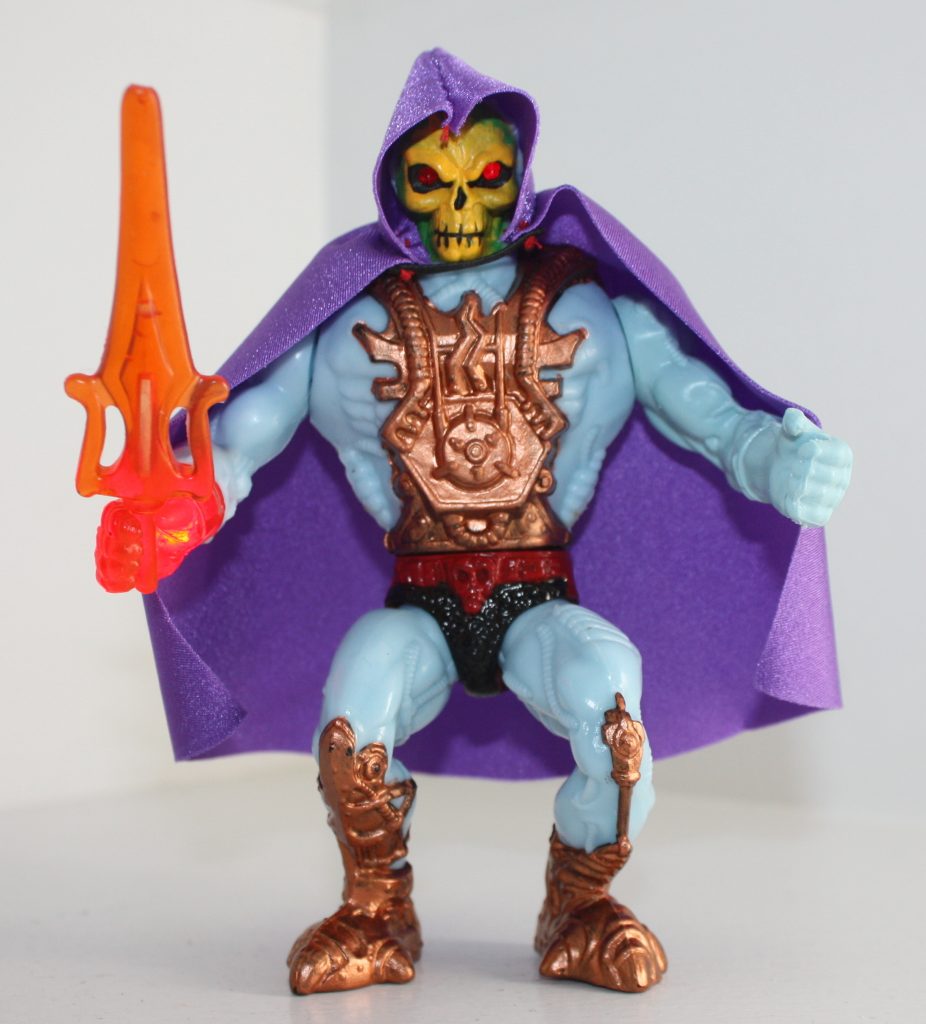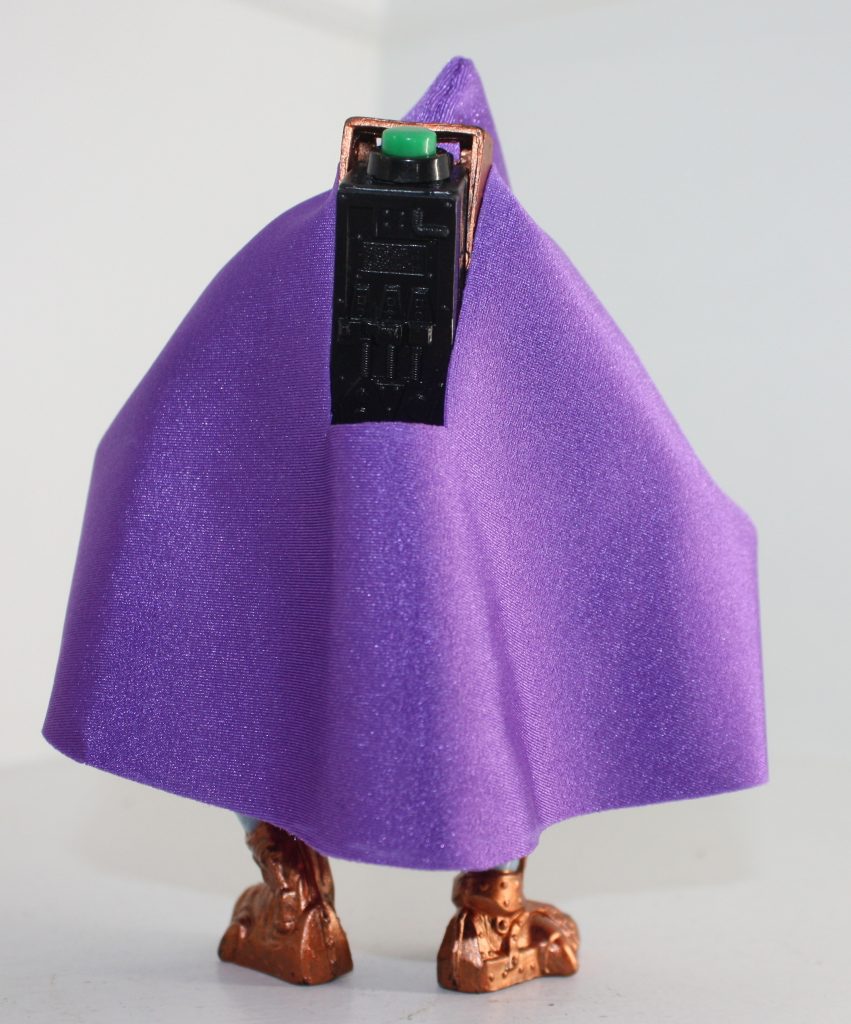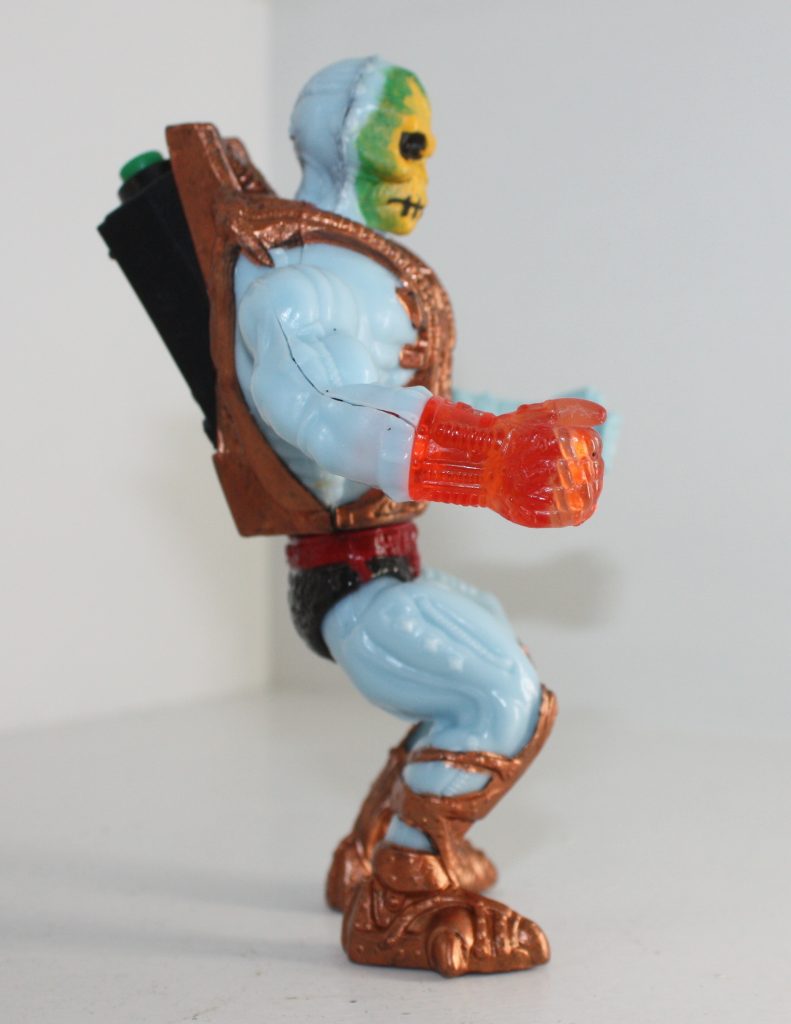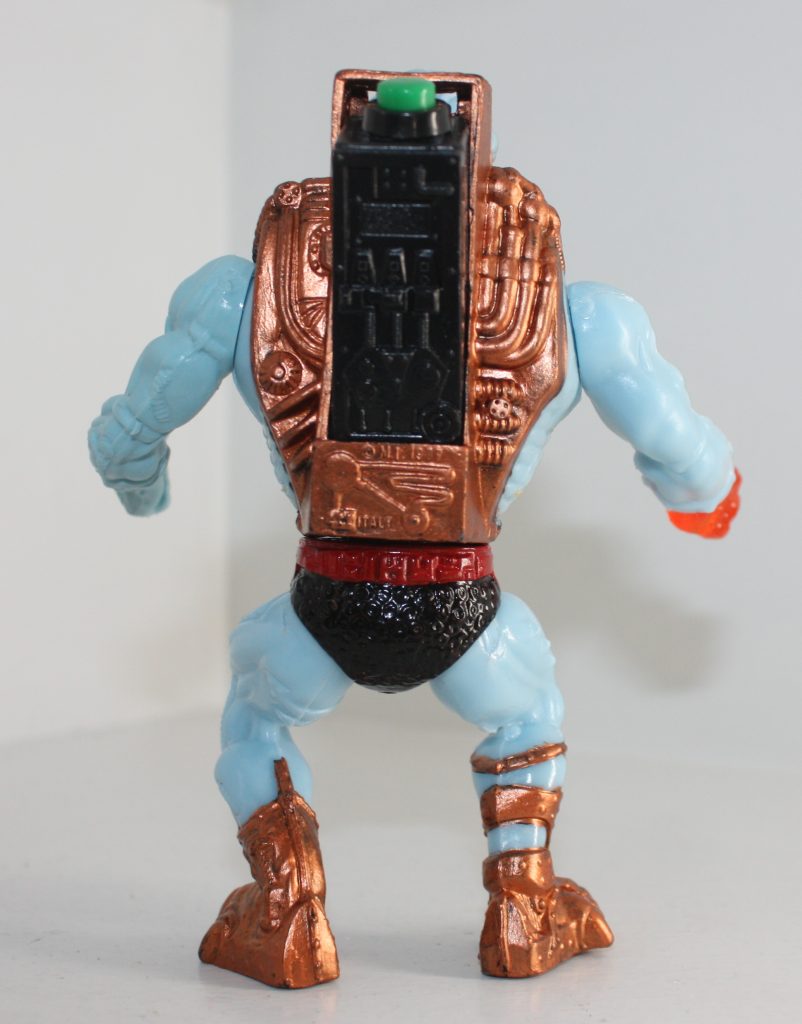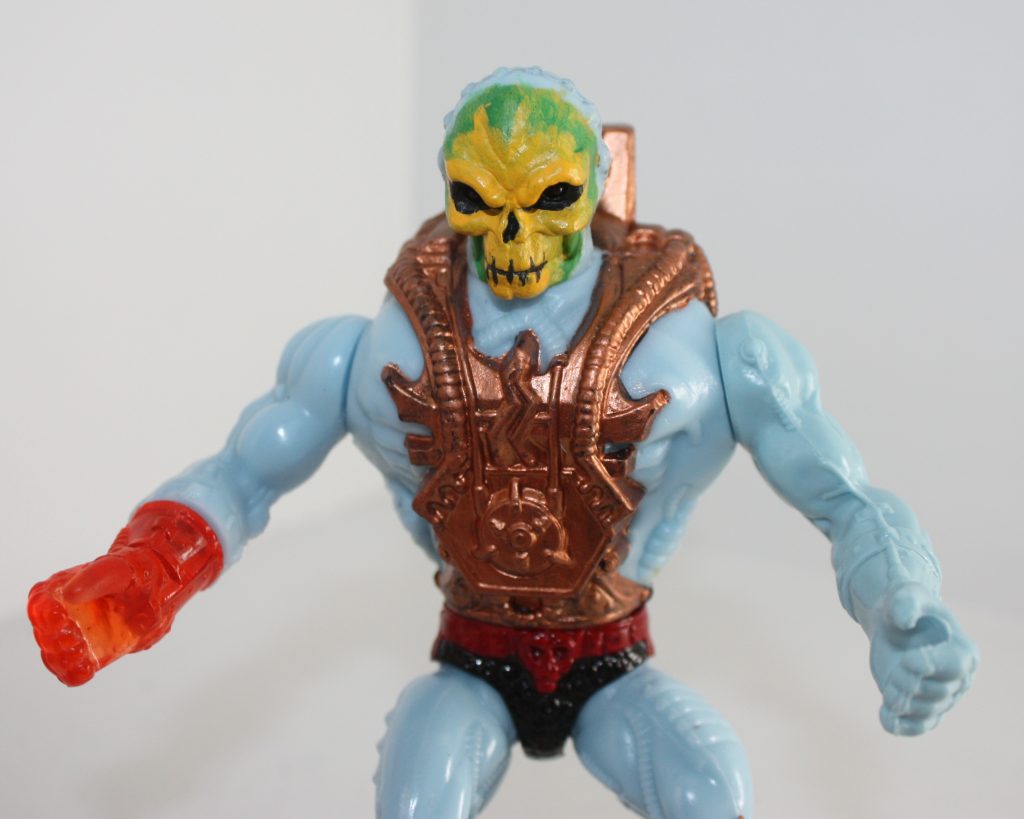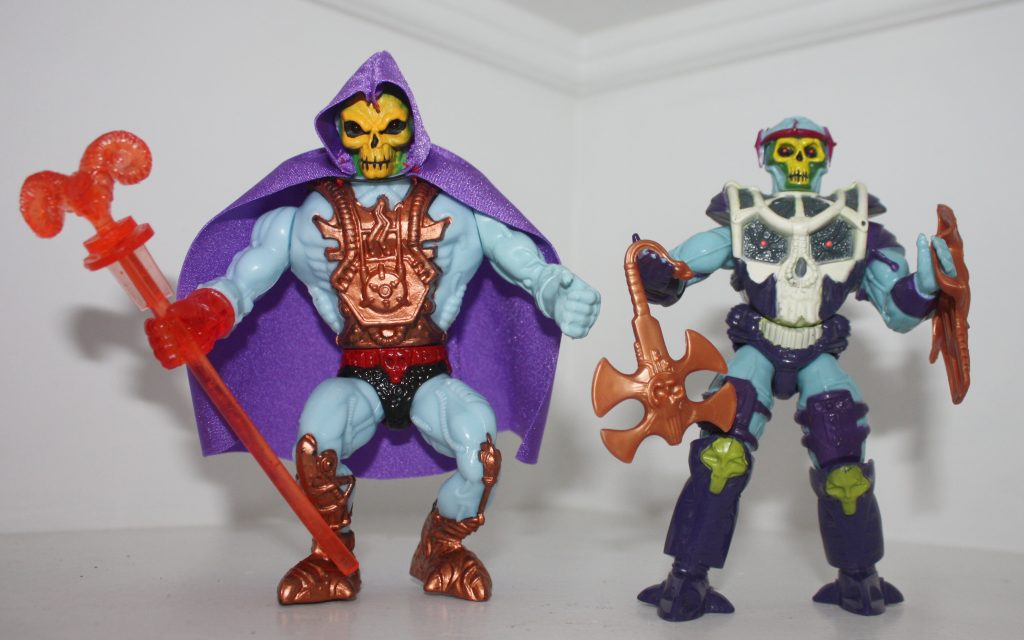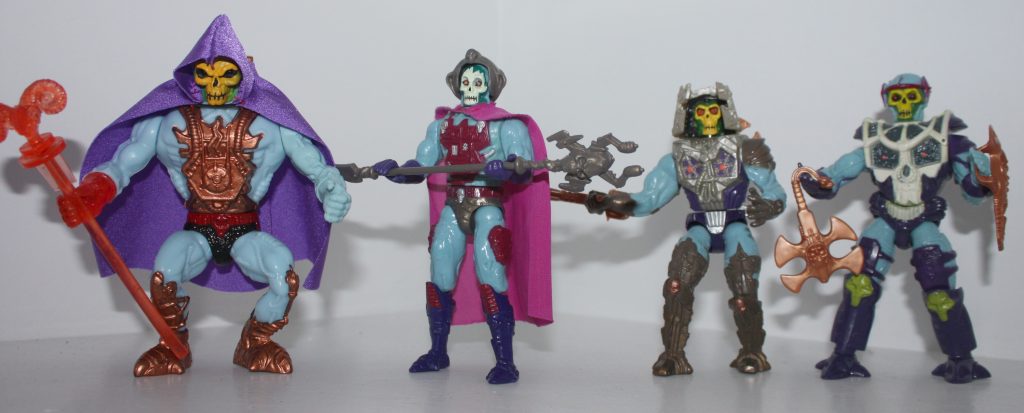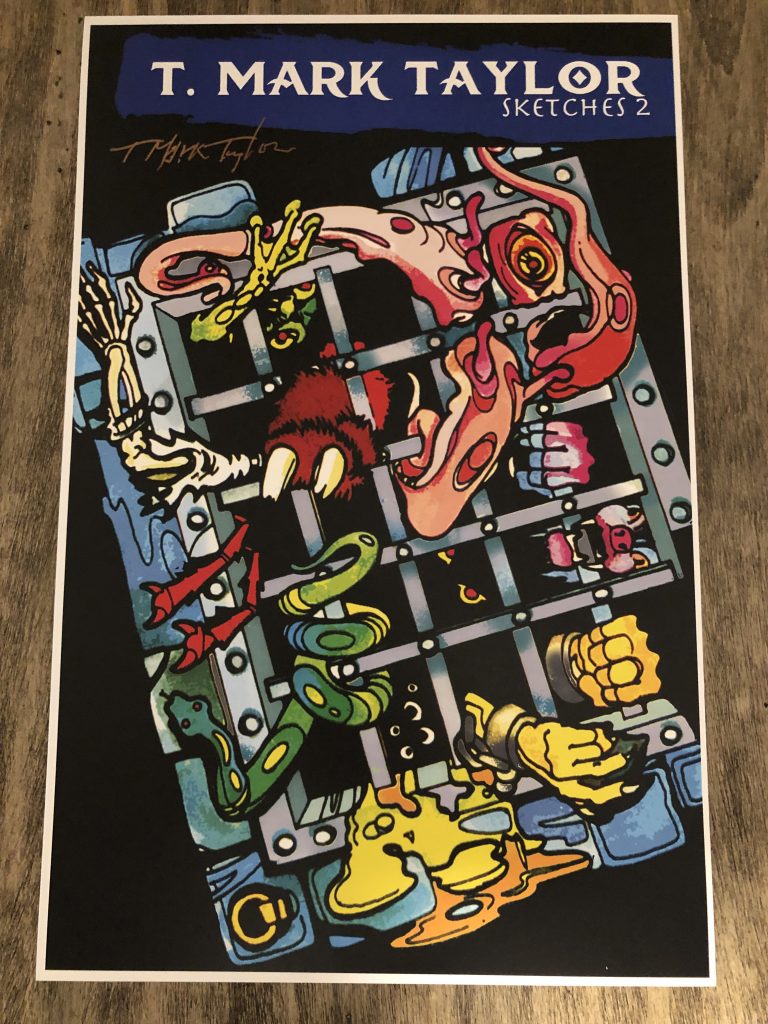
Many thanks to my buddy Doug Feague for kindly sharing pictures of his copy for this article.
At the 2019 Power-Con, Mark and Rebecca Taylor made available to fans a collection of art prints called T. Mark Taylor – Sketches 2. It’s a sequel to the first set of sketches released at Power-Con last year. A few pieces from this set appear in the 2016 Mark Taylor – The Original B-Sheets Collection, which I reviewed in depth. I’ll take a look at each piece of artwork and provide a little commentary, although several of these pieces are new to me and I don’t know the backstory behind them.
Dungeon Sticker
To start out with, the cover (shown above) is the famous Castle Grayskull dungeon sticker, which was illustrated by Rebecca Salari Taylor.
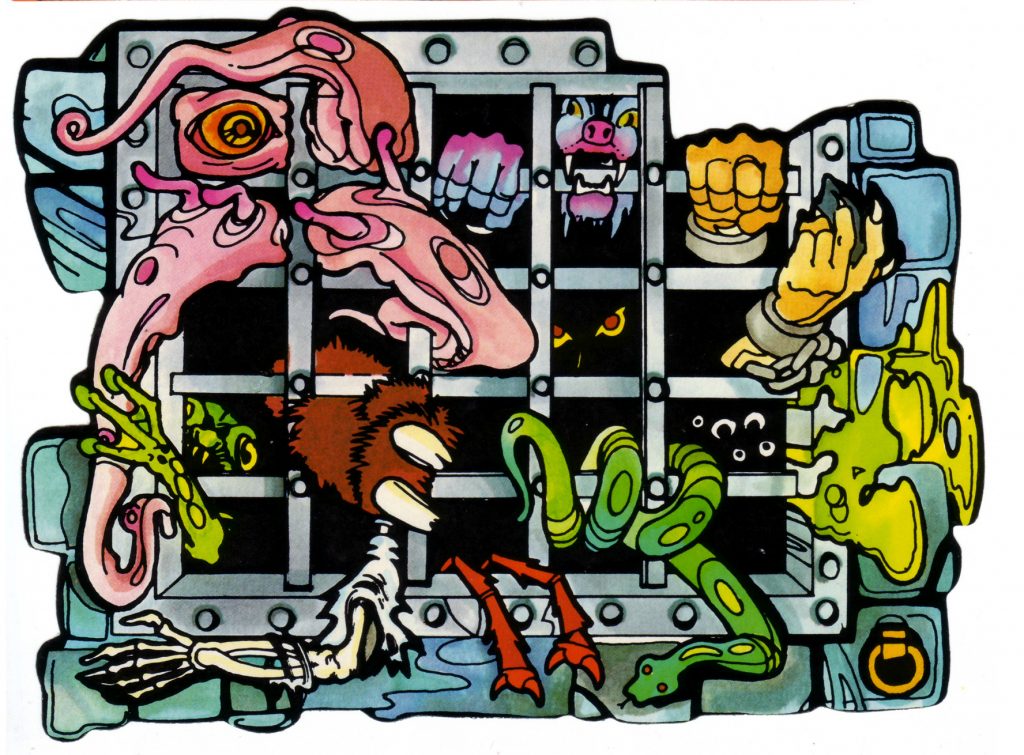
The dungeon has all sorts of meaning for Mark Taylor, who envisioned it as having held Skeletor at one point, turning him into the monster who he eventually became. More on that in a future article.
Sorceress
The Sorceress was included in the 2016 Mark Taylor Portfolio, and is one of my all time favorite pieces of art. This character’s design was eventually merged with Teela’s. The Sorceress would later show up in the 1983 He-Man and the Masters of the Universe cartoon with a completely redesigned costume. But she does make an appearance in this form (albeit with a green face) in the minicomic, He-Man and the Power Sword. You can read more about this character here.
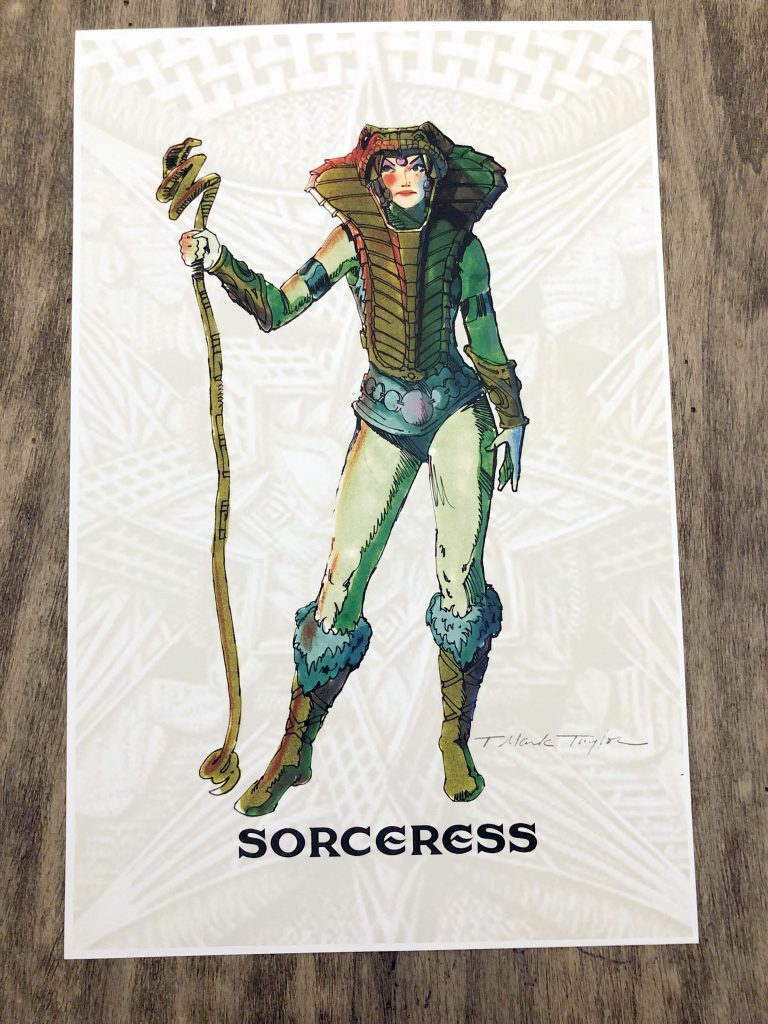

Face Shifter
Face Shifter is one of many face-changing character concepts that Mark Taylor came up with, eventually leading to Man-E-Faces. This particular version may have inspired the armor used on Terror Claws Skeletor, and possibly even the costume for the New Adventures character Flipshot.
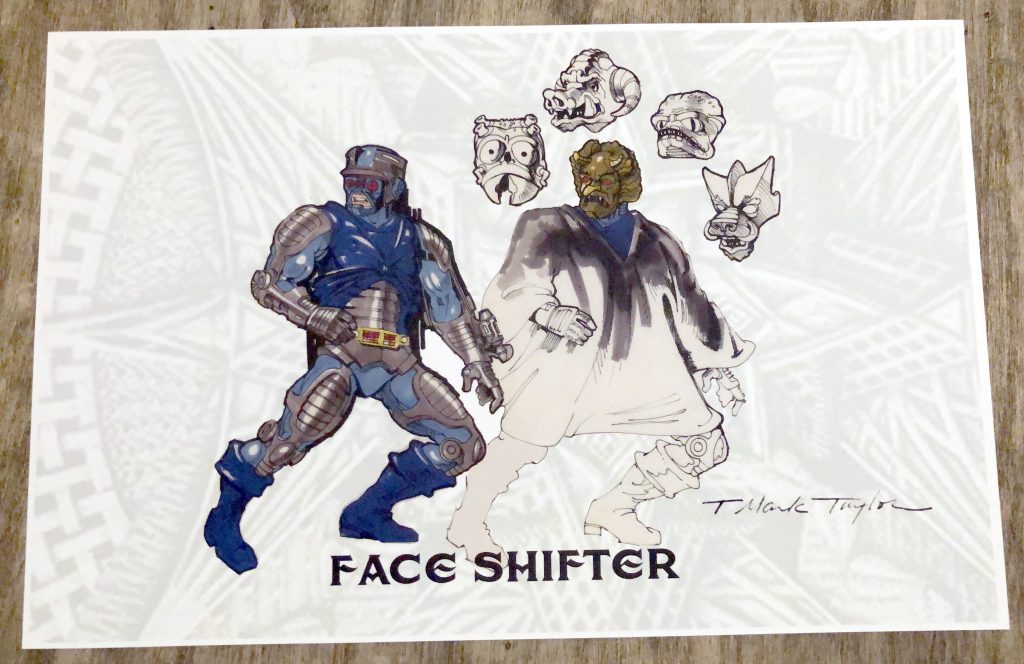
Viking Raid
Viking Raid depicts and early Castle Grayskull concept. This one also appeared in Mark’s 2016 portfolio collection and in Dark Horse’s The Art of He-Man.
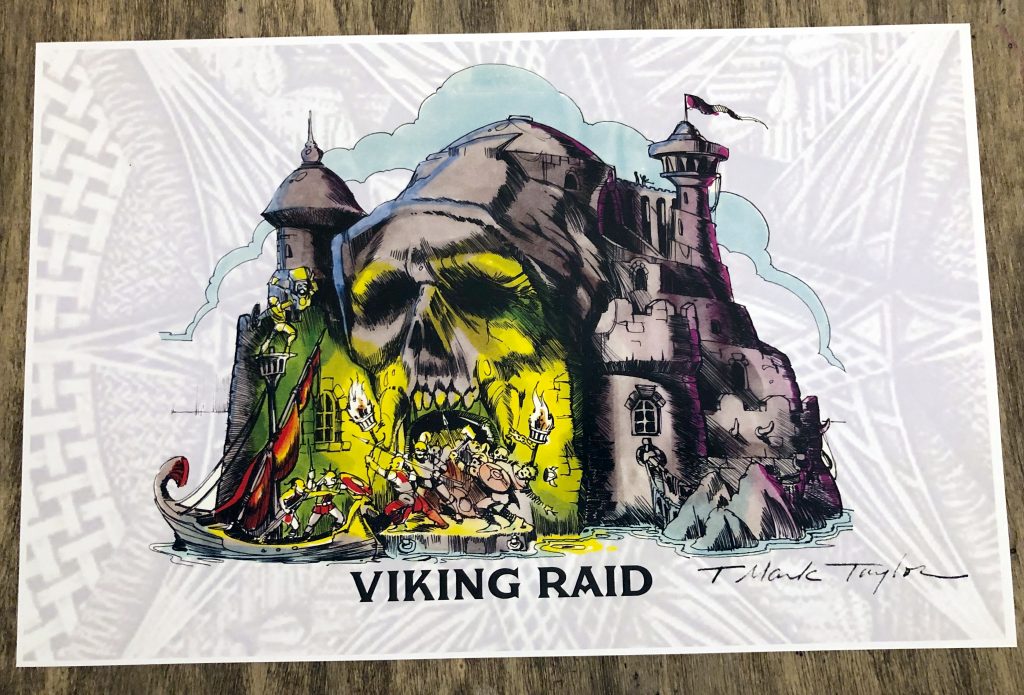
Kang Gi
As I understand it, this character was apparently pulled from Mark Taylor’s sketch book from years before his work at Mattel, and the intent was to use him as one of Skeletor’s henchmen, but may have also been considered for the Conan line that never came to be.
Kang Gi’s face bears a strong resemblance to Webstor, and may have been used as a springboard in the creation of that character.
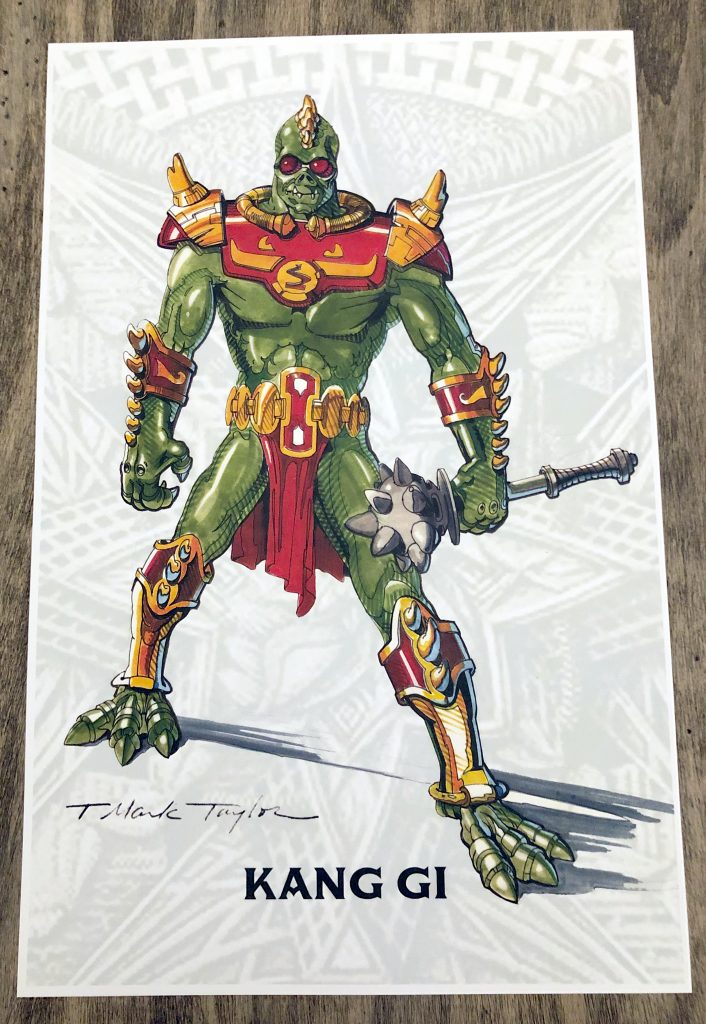
Ram Man
This is a rather exciting bit of concept art for Ram Man that I personally had never seen before. His look is fairly well developed, although he features the red/brown/orange color scheme that seemed to stick with the character right up until the toy was released in stores, where the colors were changed to red and green. The overall look is quite similar to Ram Man as he appears in the minicomic, He-Man Meets Ram Man.
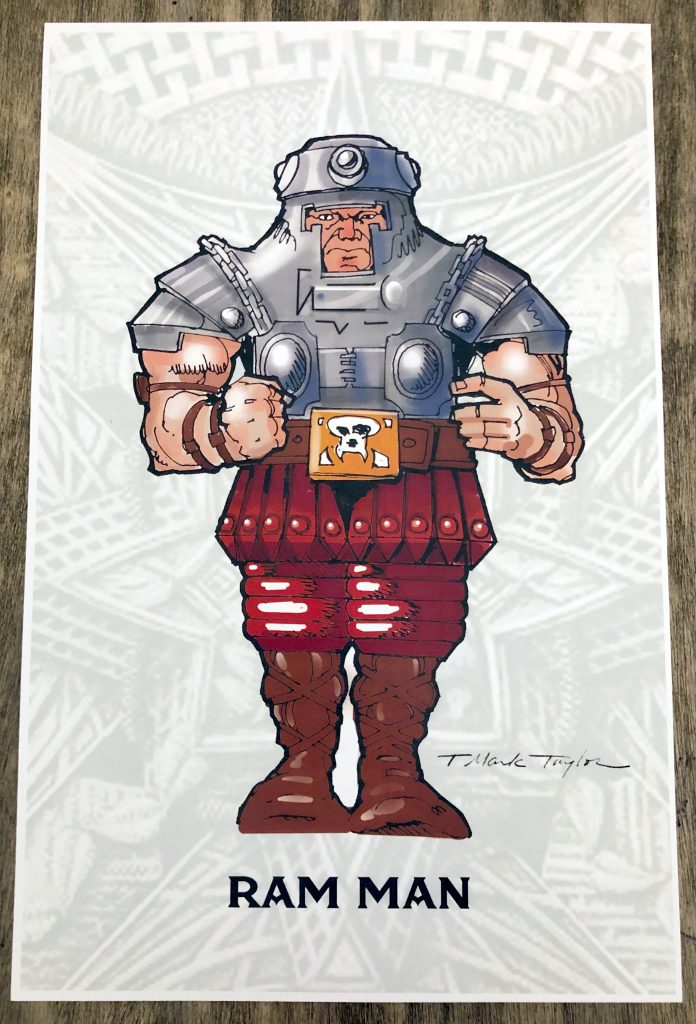

The Merciless
Known to many fans as “Demo Man”, The Merciless is a differently colored version of a piece of Mark Taylor concept art that has been floating around for the fan community for some time. This version features a darker color palette and a blue beard. This may have been a concept for the unproduced Conan line.
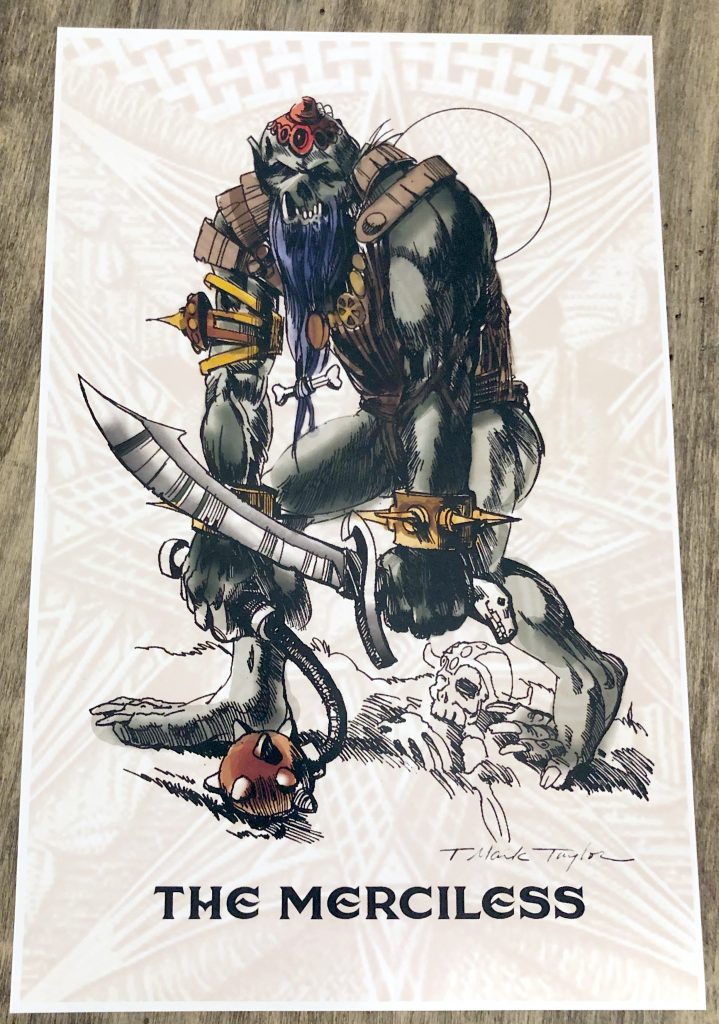
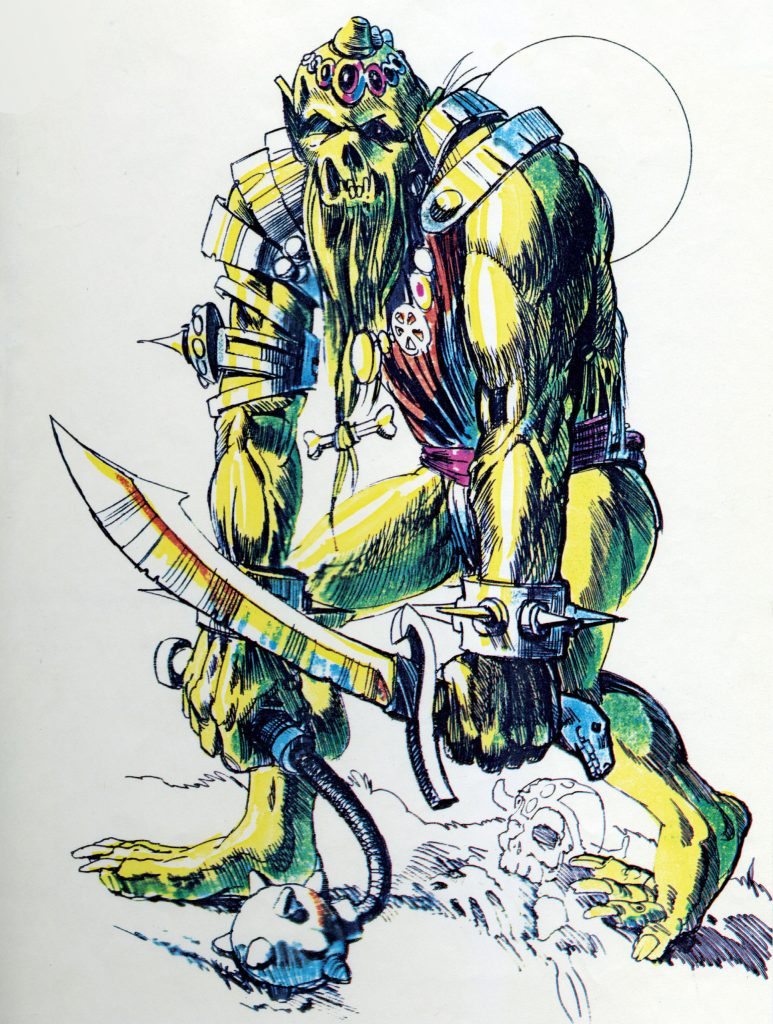
The Enforcer
The Enforcer is a character that I’ve not seen previously. To me he fits in very well in the world of MOTU, and I would leave to see a figure made from this wonderfully weird and quirky design.
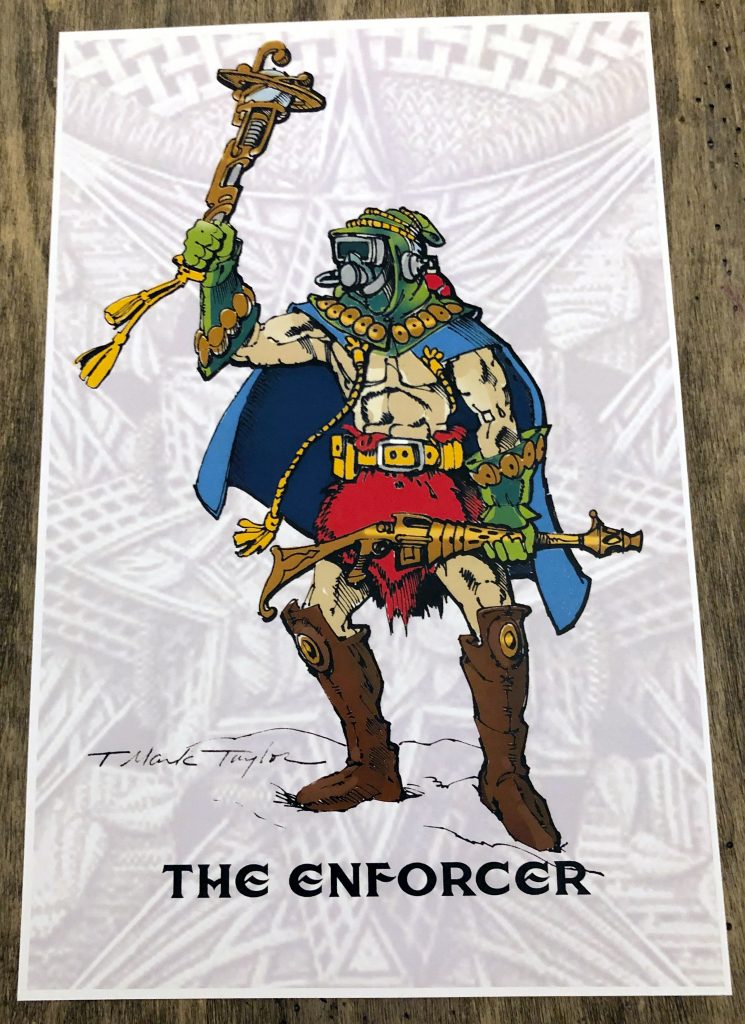
Mokus
Another character that is completely new to me, Mokus looks like some kind of giant, frightening but also whimsical plant monster. I’d love to learn the backstory behind this character.
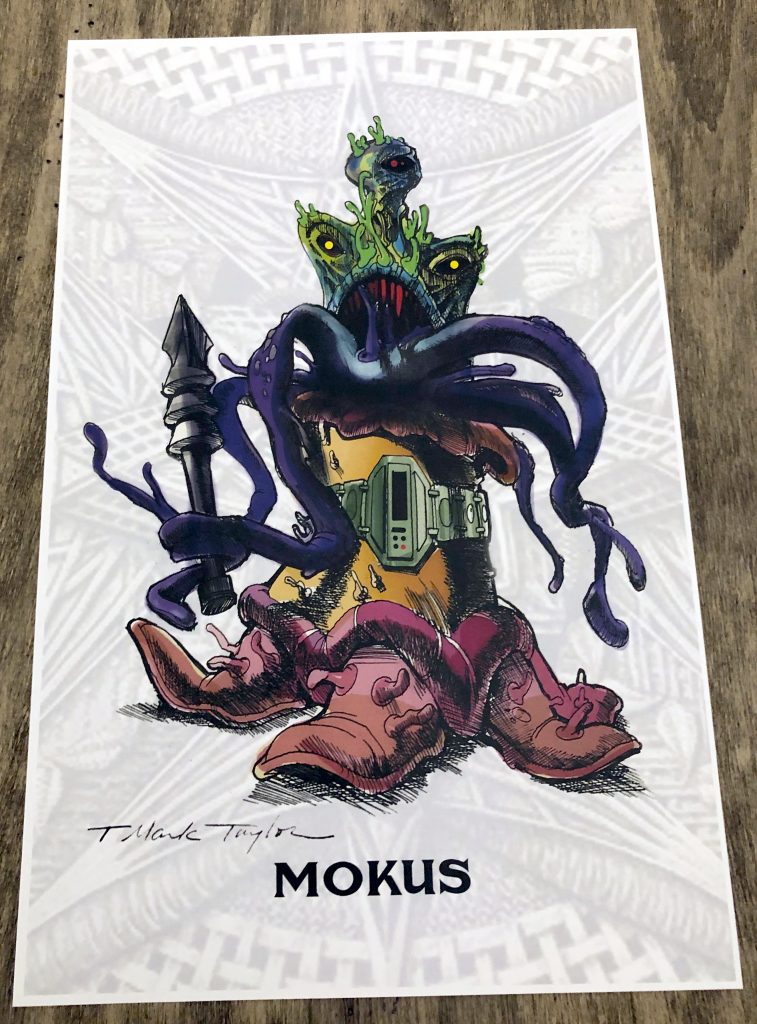
Stalker
Stalker is a great plant monster concept. The face reminds me just a little of Swamp Thing, and the plant-based costume and weapon are right on target.
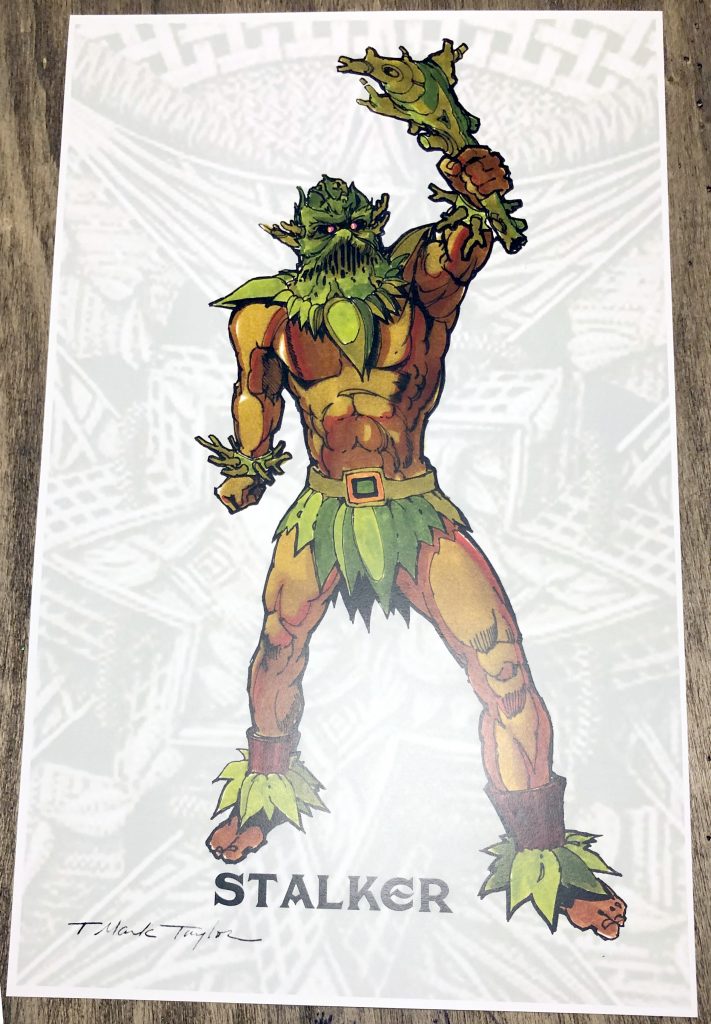
Blaster
Blaster is a classic-looking science fiction concept character. His helmet almost looks like the prow of a space ship. He seems to be shooting beams of some kind out of his writstband as well. This is another concept I hadn’t seen previously.
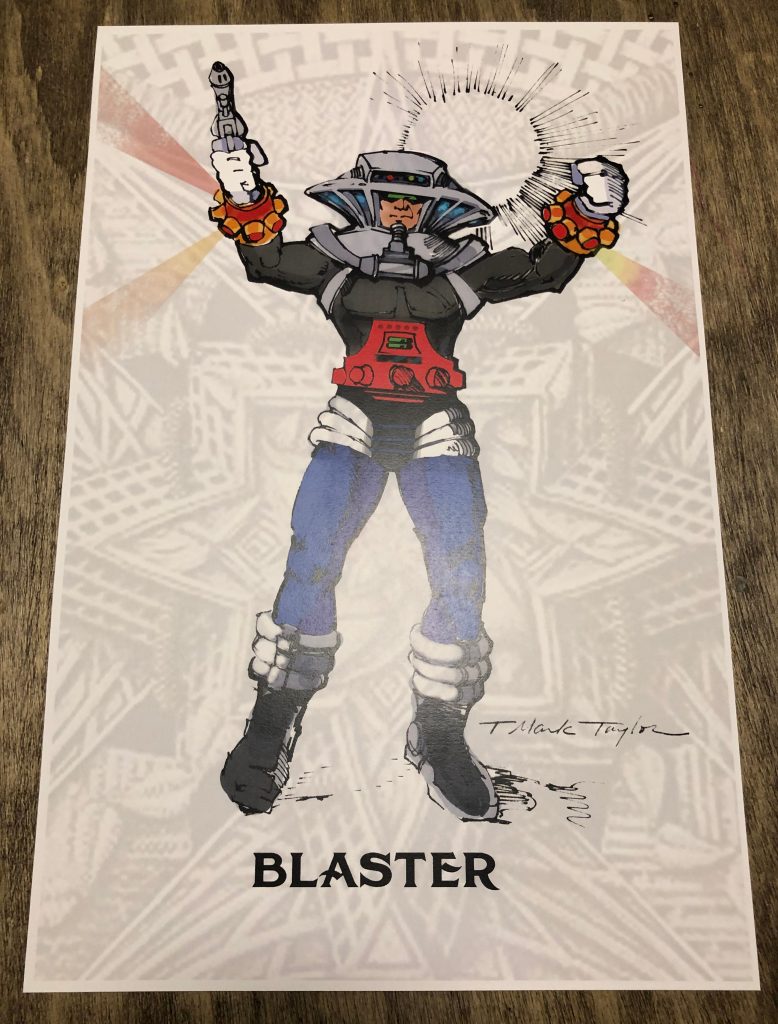
Back Page
Finally, the back page features a lovely message from Mark, adorned with another piece of art from the Castle Grayskull playset, again illustrated by Rebecca.
